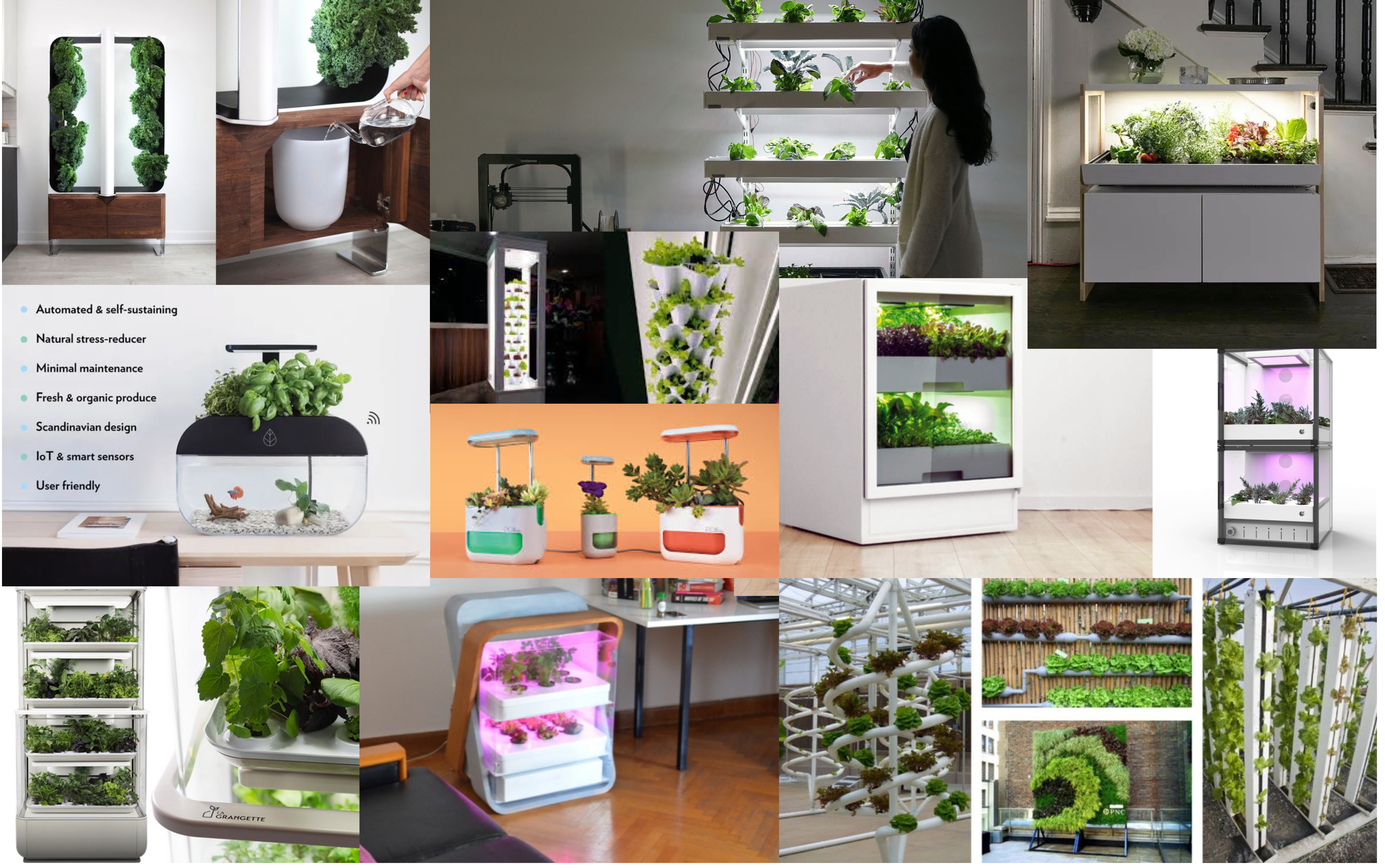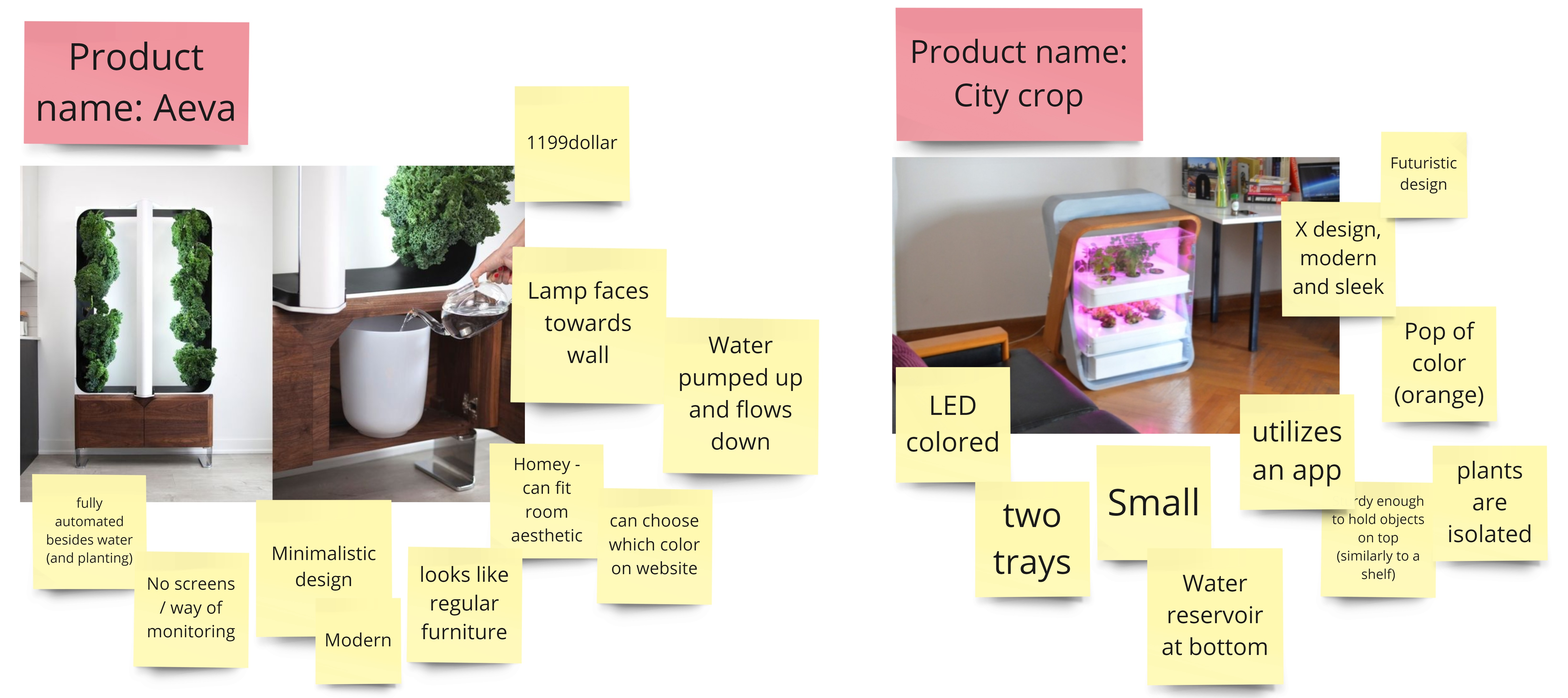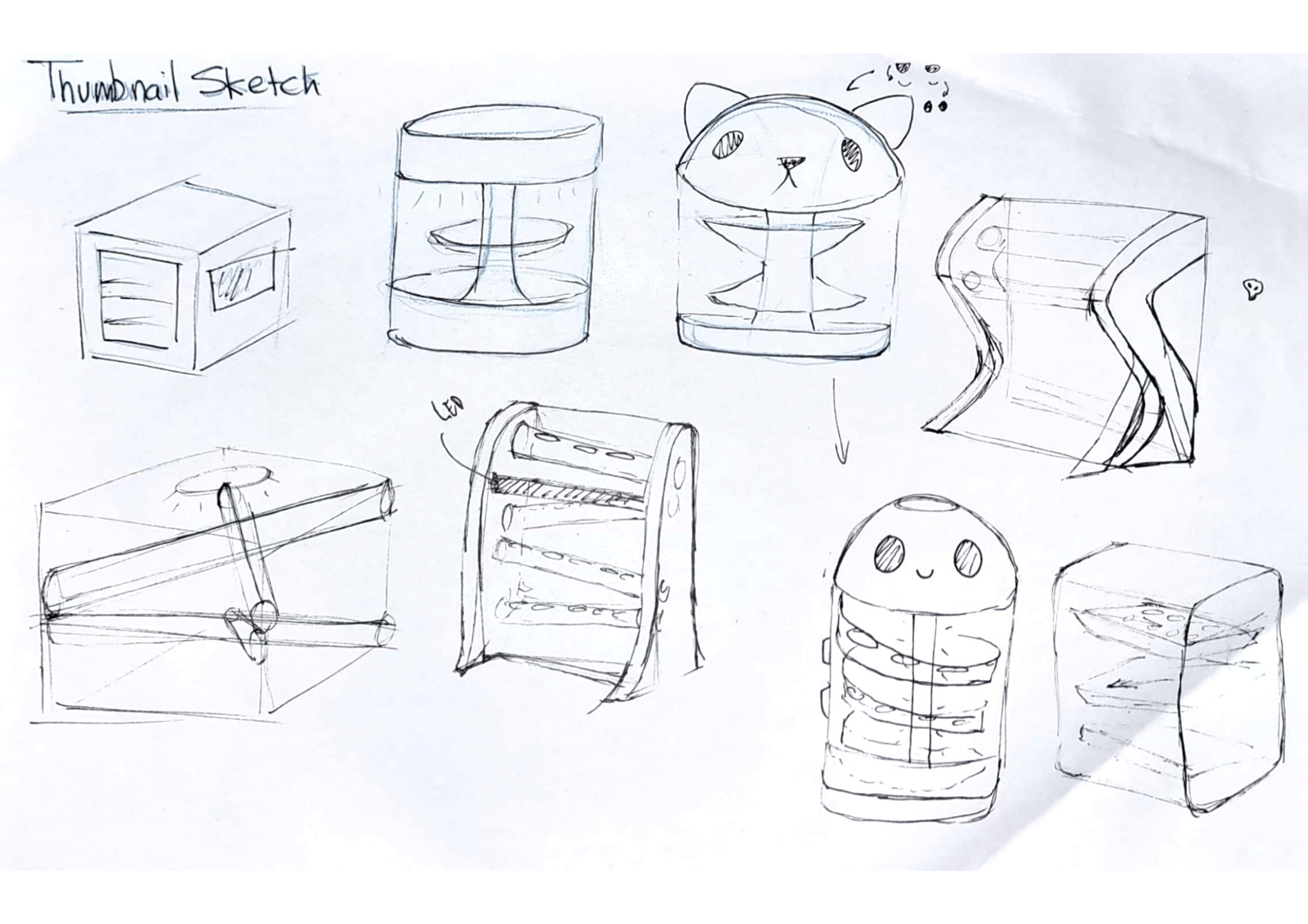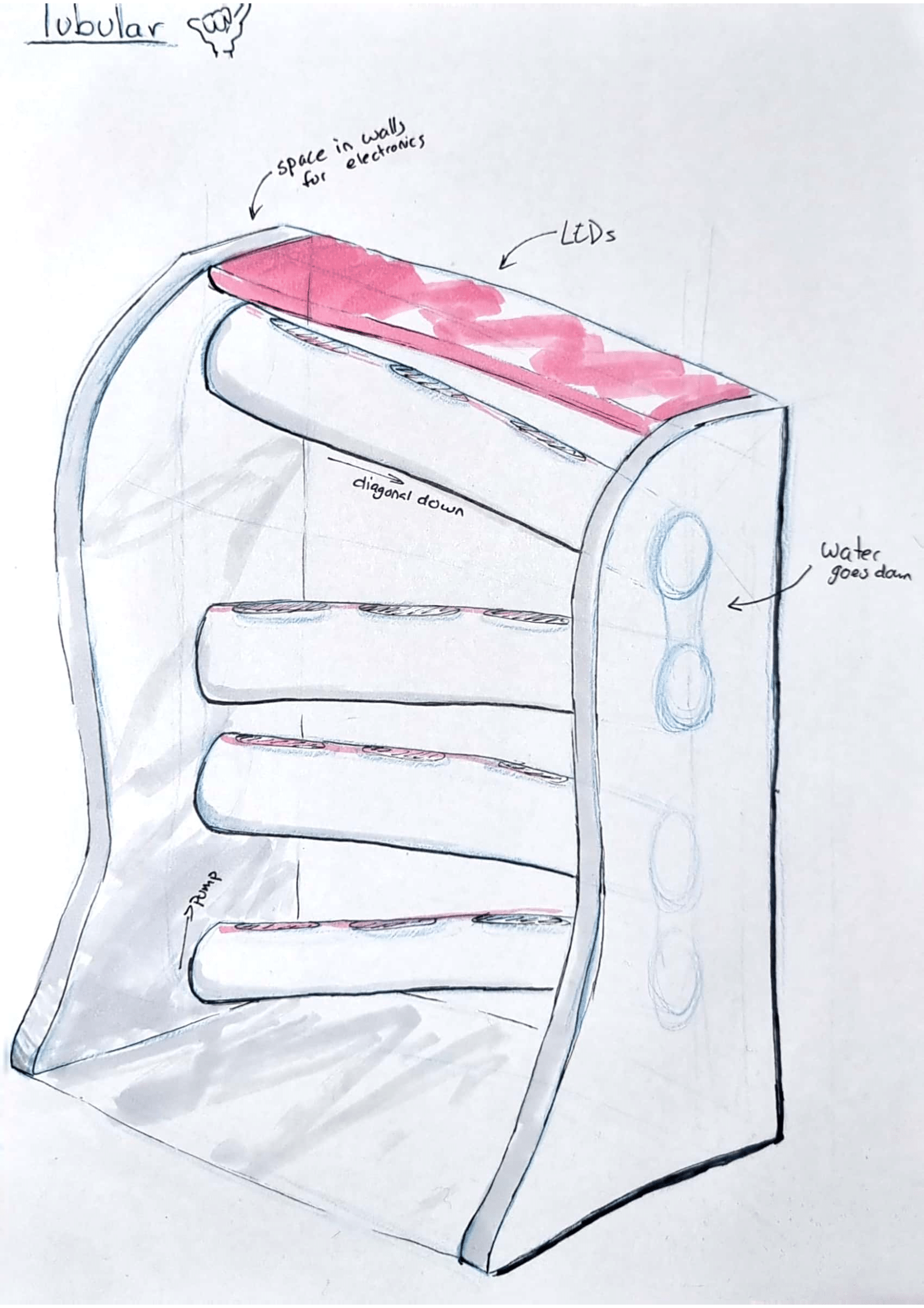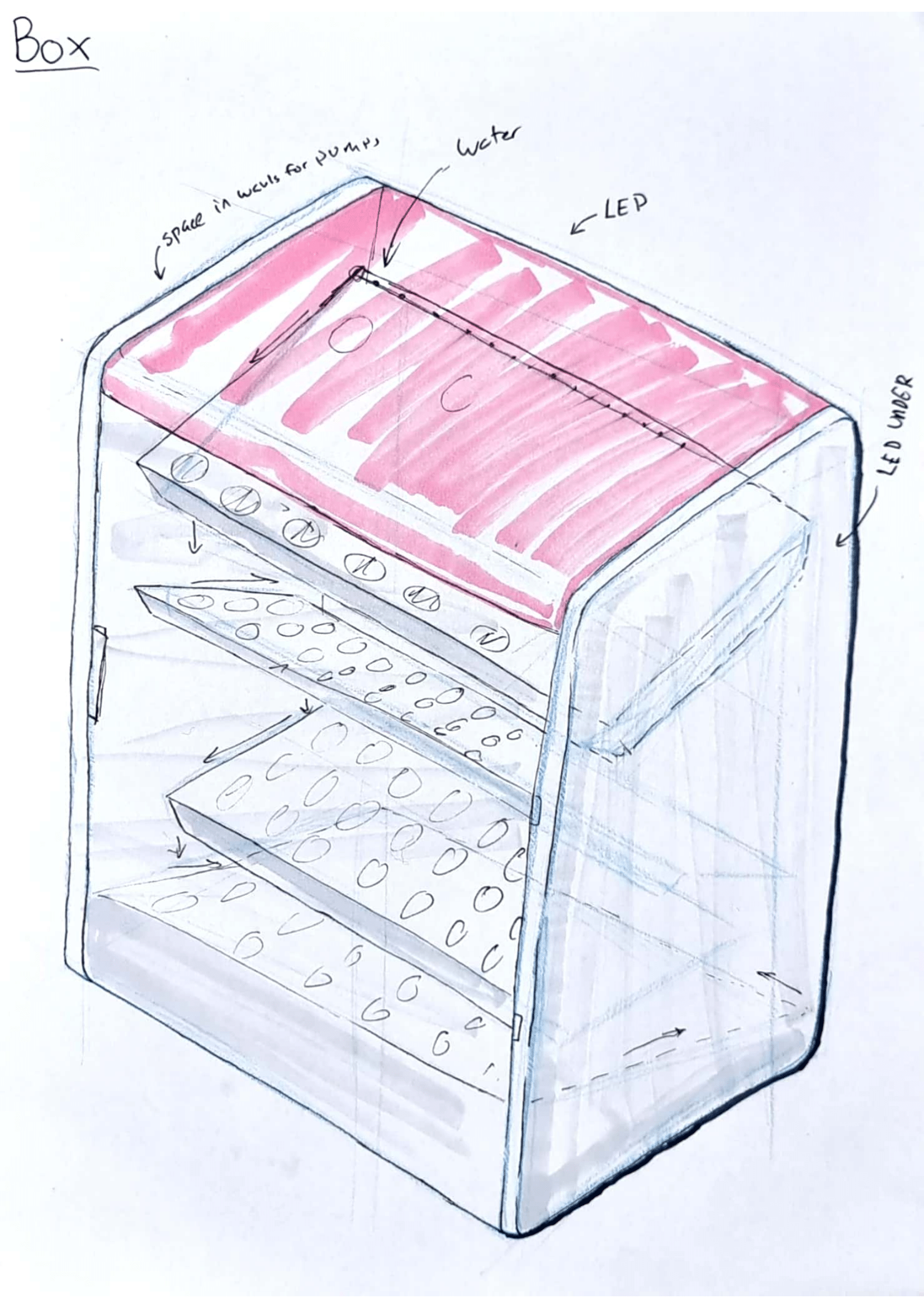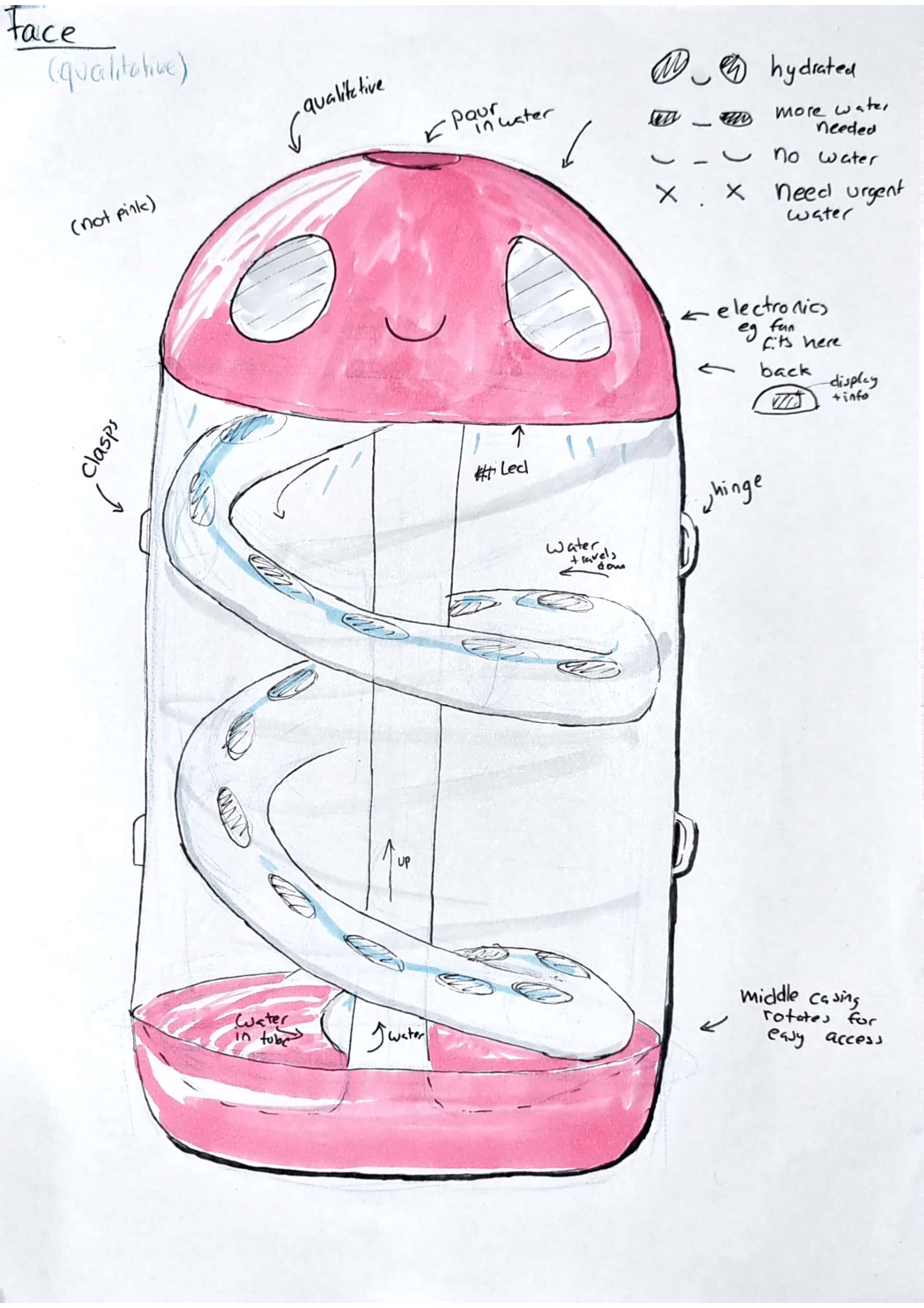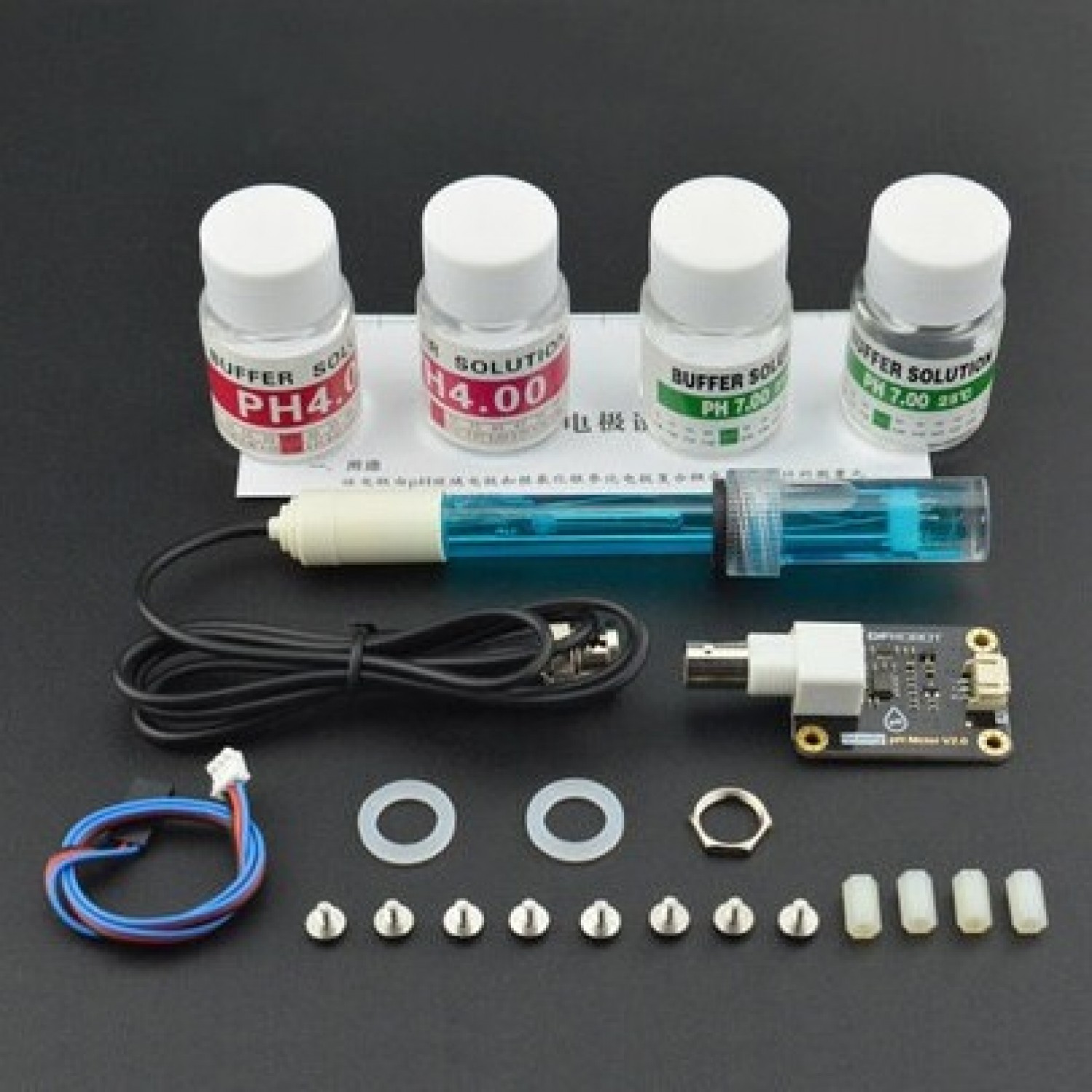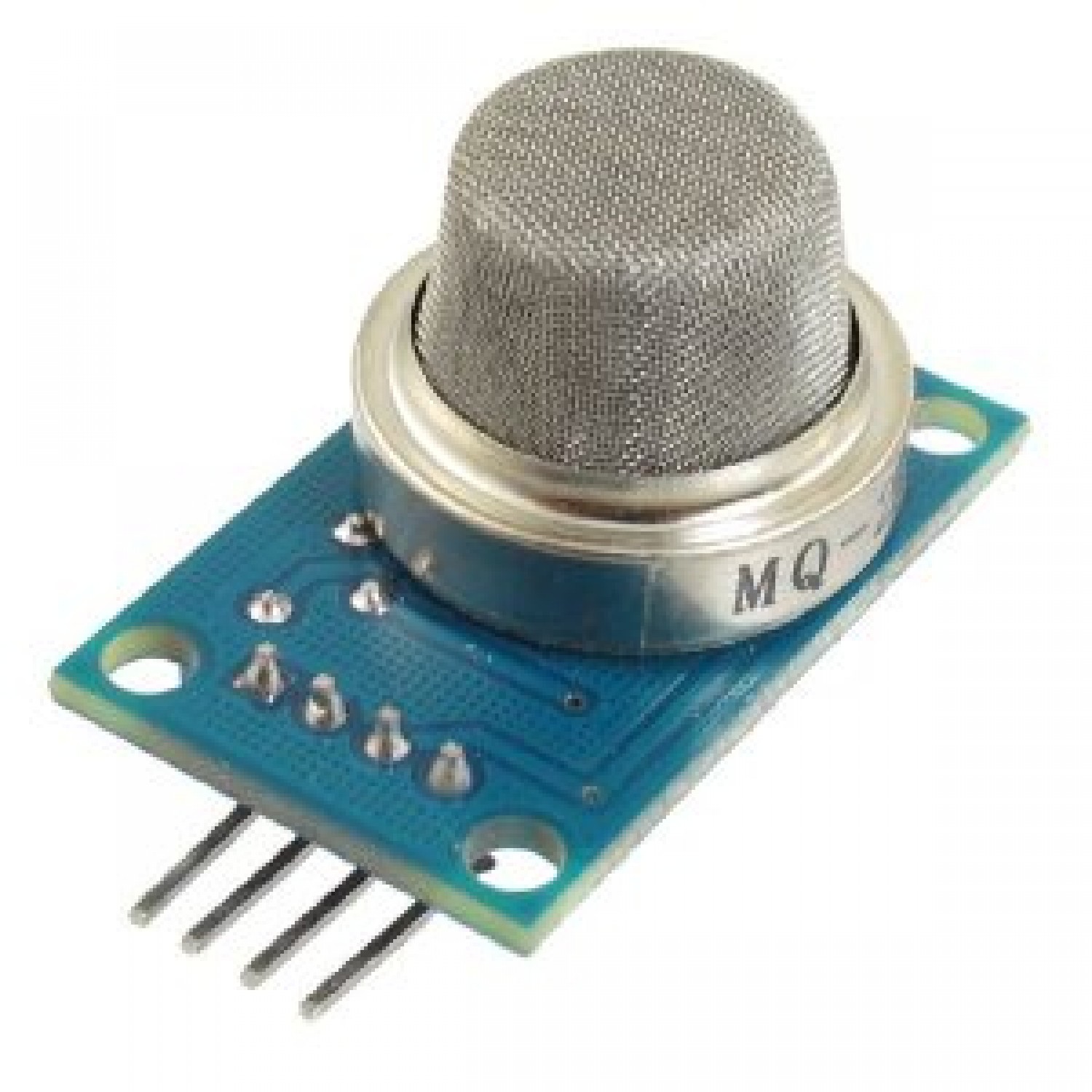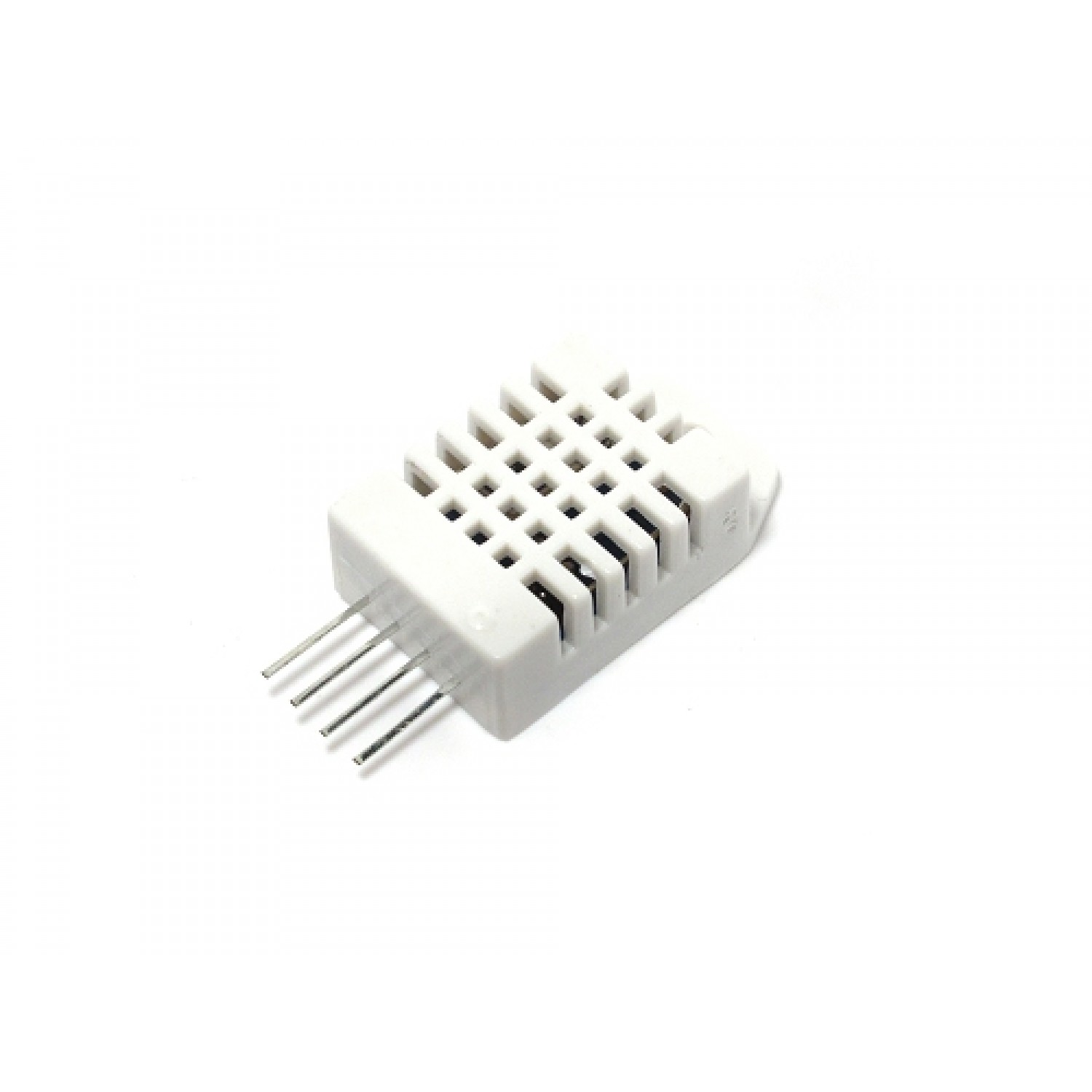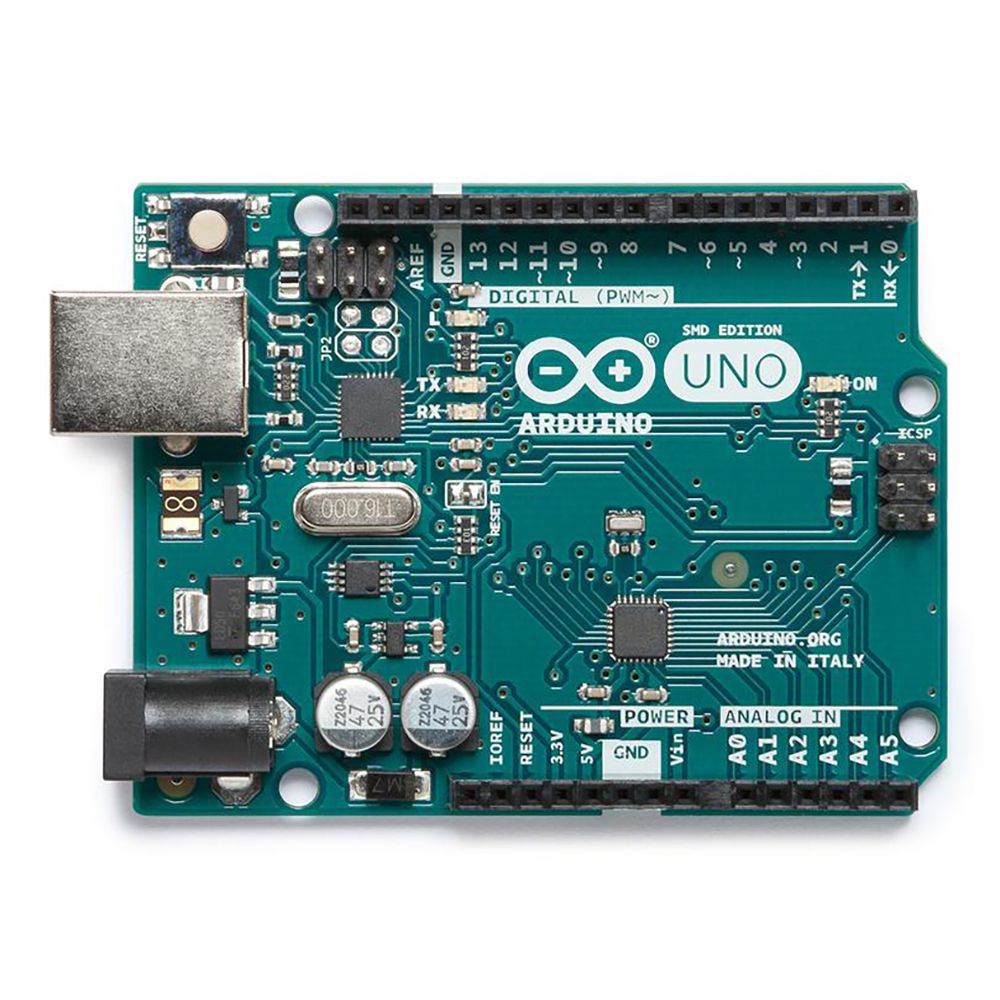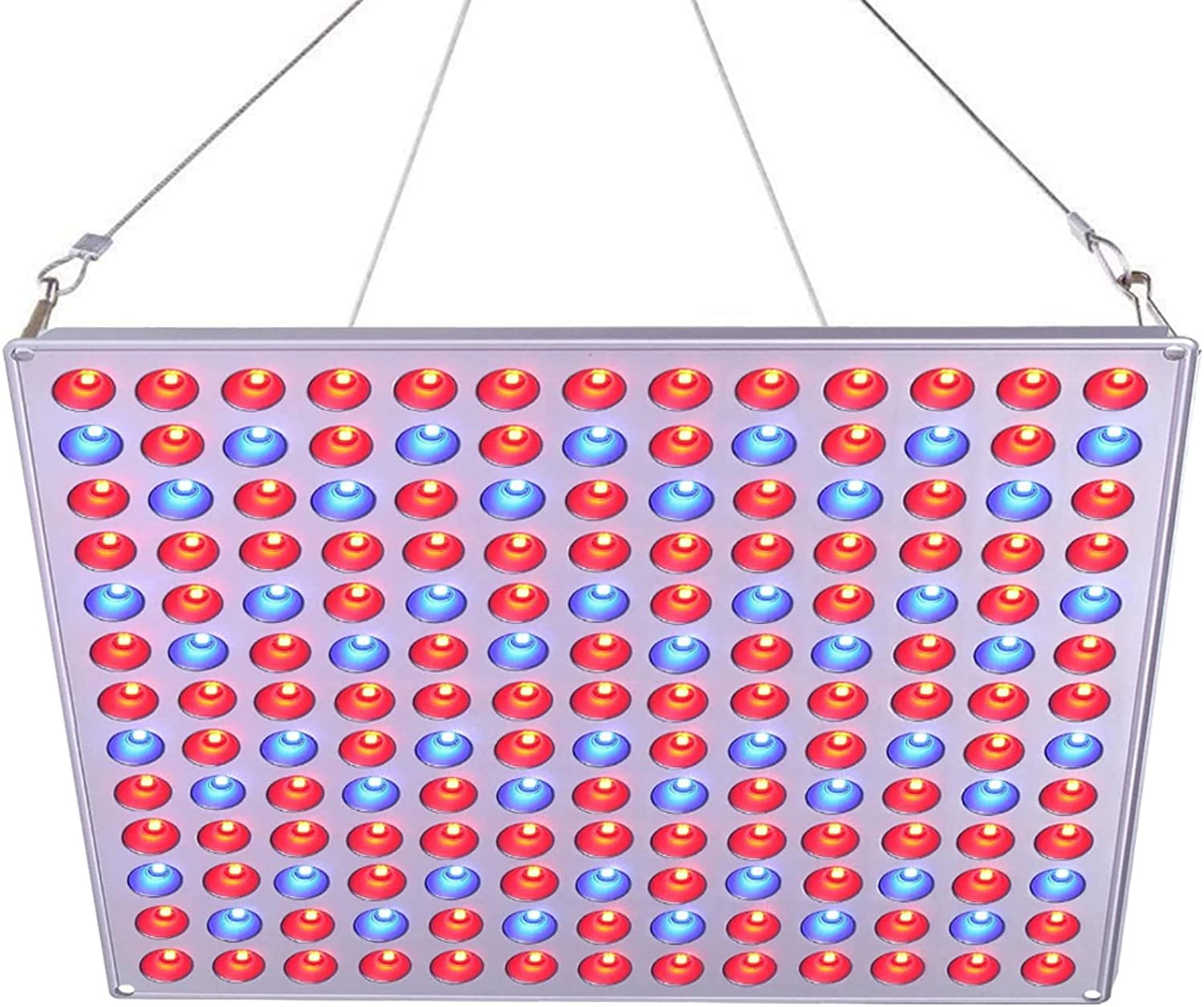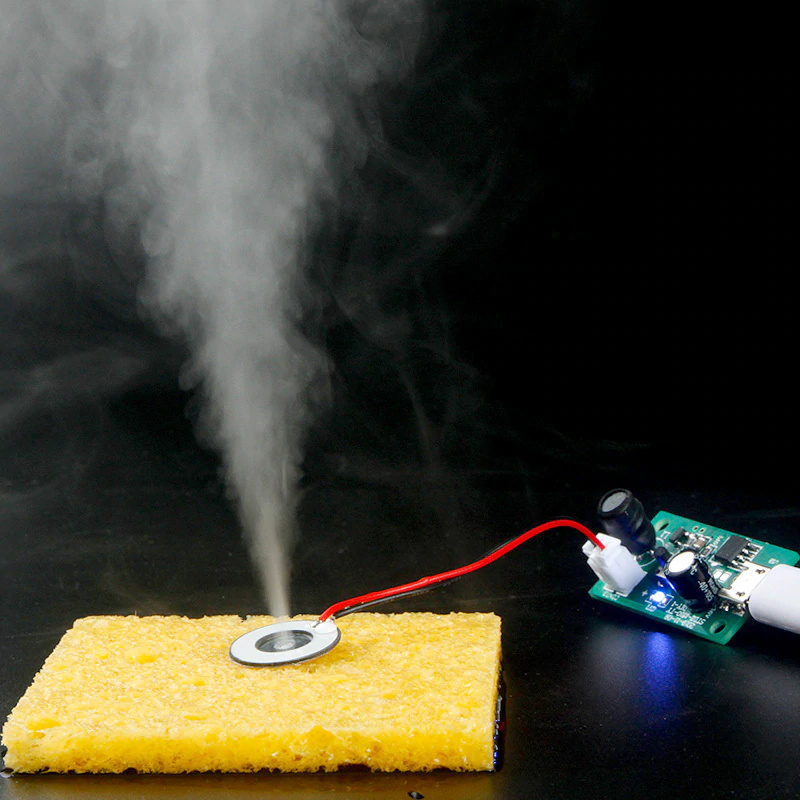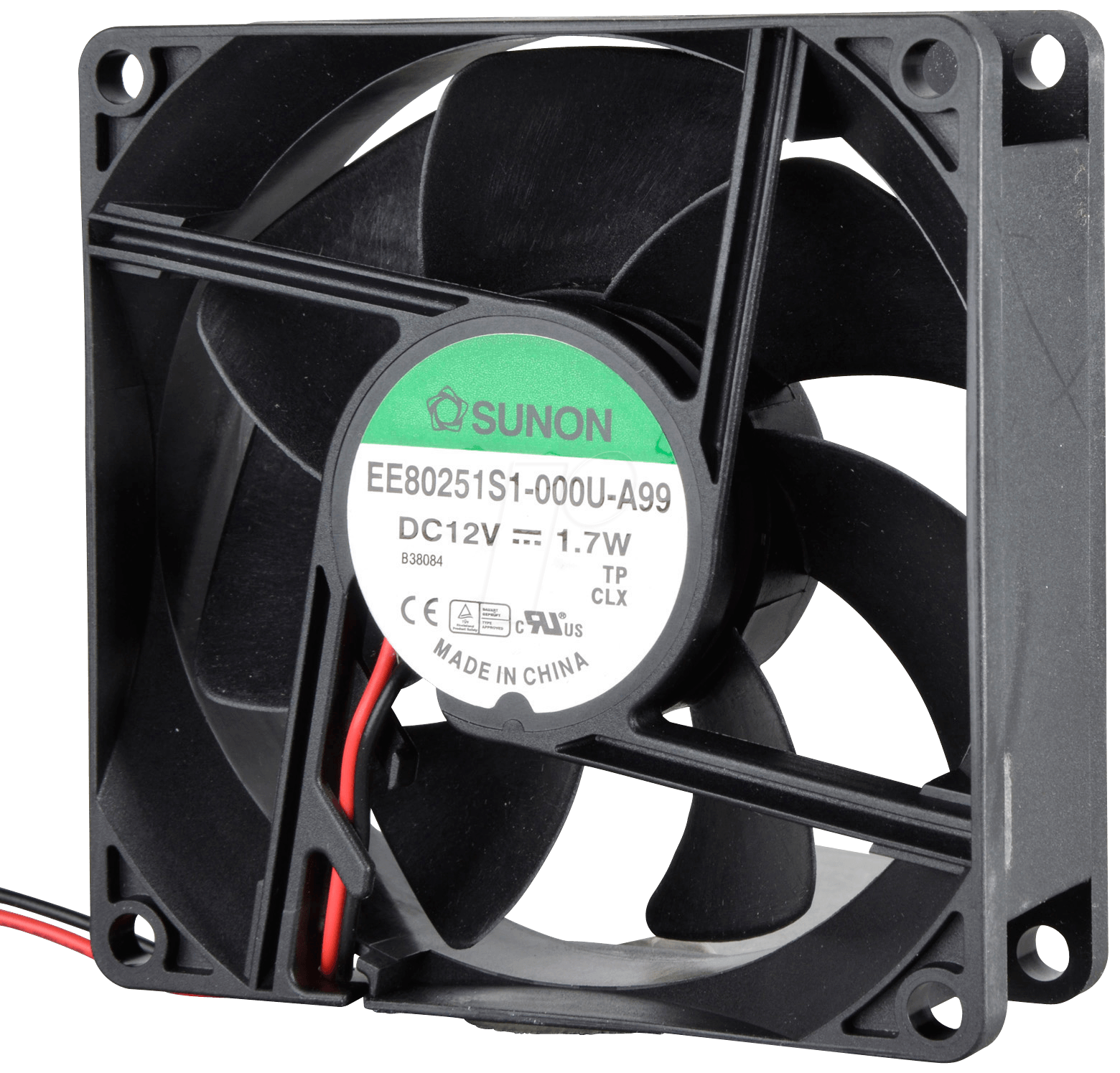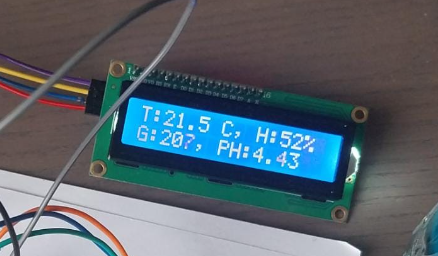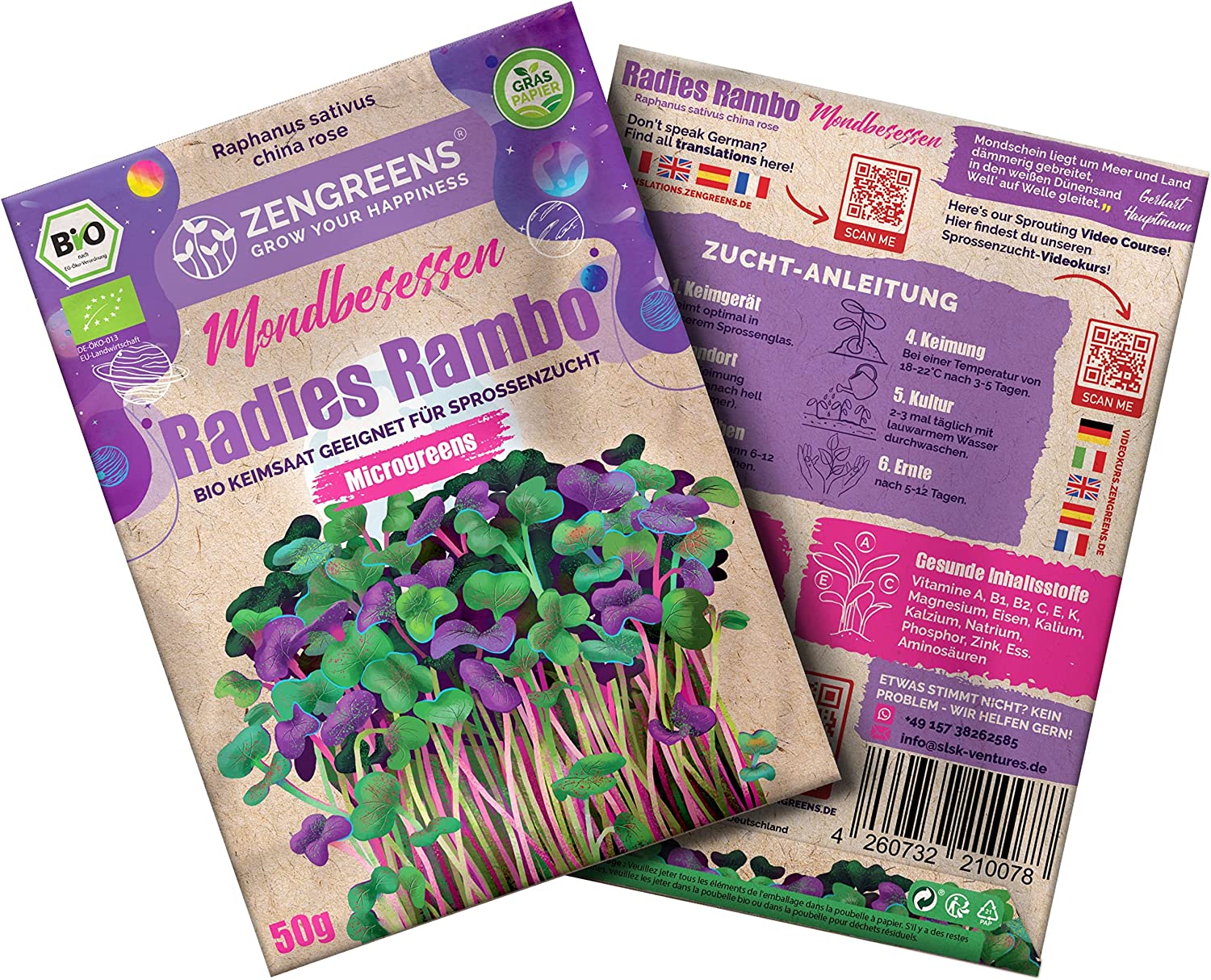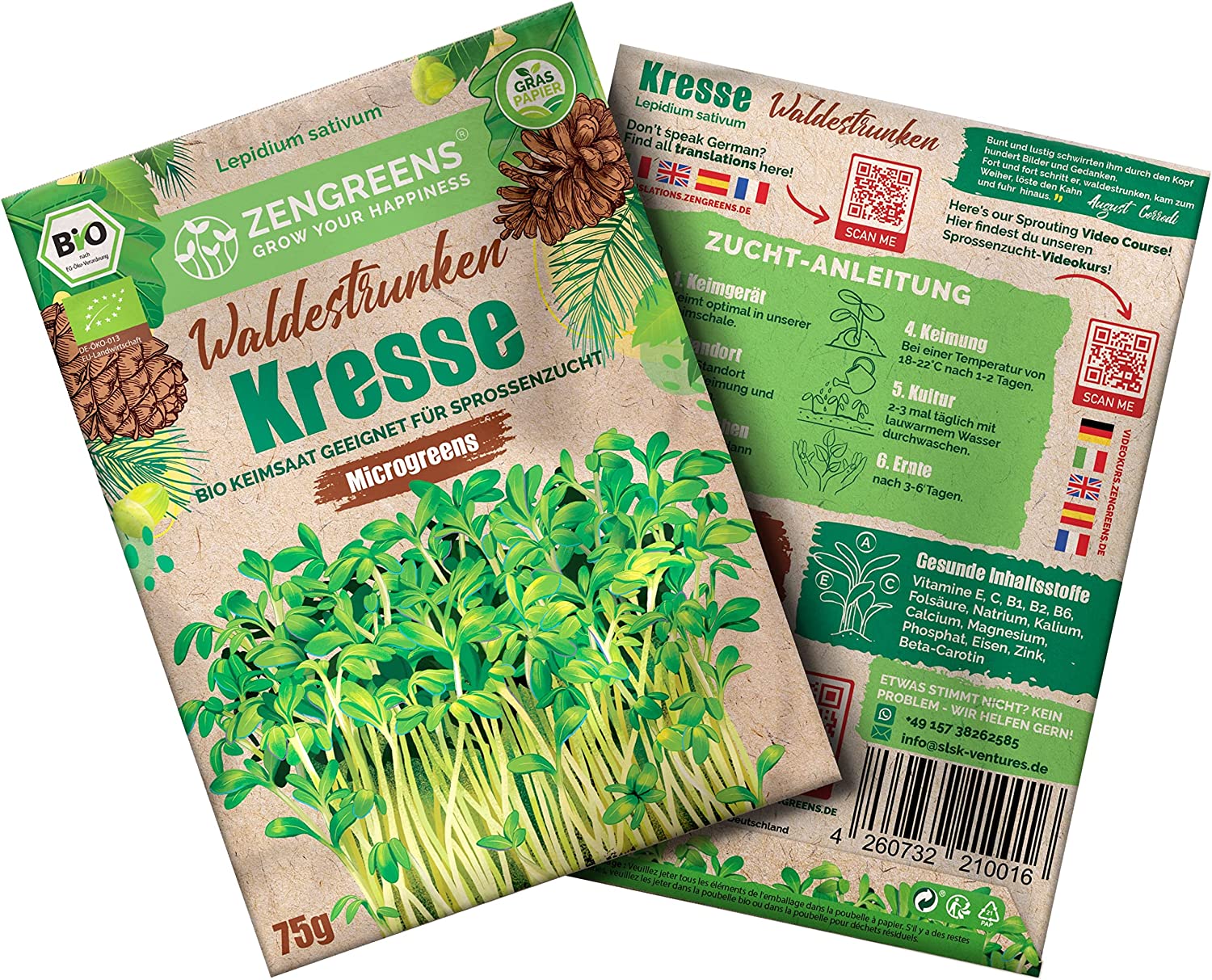PRE2022 3 Group11
| Name | Student number | Study |
|---|---|---|
| Vietlinh Pham | 1616420 | Industrial Engineering |
| Lars Nobbe | 1746111 | Applied Mathematics |
| Paul van Geest | 146326 | Electrical Engineering |
| Aloysia Prakoso | 1693514 | Industrial Design |
| Mauritius van Maurik | 1600426 | Automotive Technology |
Problem Statement and Objectives
As the global population continues to increase, the amount of arable land available remains constant. This poses a threat to future food security as conventional farming may not be able to meet the rising demand. Additionally, conventional farming practices are associated with a range of challenges that negatively impact both humans and the environment. These challenges include food safety concerns, ecosystem disruption, and water wastage. To address these issues, it is necessary to develop more efficient, compact, and safe farming methods. Indoor farming, particularly vertical farming, has emerged as a promising solution to meet these requirements.
Indoor farming involves growing crops in a controlled environment without relying on soil. Methods such as hydroponics, aeroponics, and aquaponics are used instead, which not only increase crop yield but also eliminate soil-related problems. LED lighting is used to optimize plant growth, reducing the need for natural sunlight. This makes indoor farming viable in areas with limited sunlight and rainfall. Moreover, indoor farms can be stacked on top of one another, maximizing crop production per unit area.
Vertical farms are commonly housed in specialized buildings, but they can also be installed in individual homes on a smaller scale. In theory, every household could have their vertical farm, which would reduce dependence on traditional farms and lower food costs. Additionally, the excess produce from home-based vertical farms can be produced at a lower price due to reduced transportation costs. However, not everyone is receptive to this technology due to the investment of time and money it requires. For example, if the available space is limited, such as in a high-rise building, an allotment garden could be an alternative option. Nevertheless, this comes with some drawbacks, such as monthly costs, the need to travel there, and the possibility of being assigned communal jobs, since these allotment gardens are maintained by small communities of hobbyists. An at-home vertical farm could potentially eliminate this time and money investment and make it more accessible. The target audience for home-based vertical farming systems varies, including individuals seeking the cheapest and easiest systems, hobbyists interested in gardening, and teachers looking for educational tools.
The primary focus of this project is to design an affordable and user-friendly vertical farming system for hobbyists, emphasizing features such as easy setup, low maintenance, and cost-effective materials that will enable even novice gardeners to grow their own fresh produce in the comfort of their own homes. This group is more likely to embrace this technology, but there is currently no system that caters precisely to their needs at a reasonable price. Therefore, the goal of this project is to develop a vertical farming system that meets their requirements while remaining cost-effective.
State of the Art
Vertical farming is growing sector. In this section the characteristics and features of already existing vertical farming systems will be discussed. There are two main methods to grow plants in a vertical farm: hydroponics and aeroponics. Both methods share the characteristic that plants grow without soil, but the way in which nutrients are supplied differs. In hydroponics, crops are provided with nutrients through a nutrient-rich water solution (Khan, Purohit, Sadharia, 2020). Efficient growth depends on finding a good nutrient solution and optimizing climatic factors such as pH, light, humidity and temperature. Aeroponics instead exposes plant roots to aerosol drops that contain nutrients, (Eldridge, Bethany, 2020). Specific parameters to consider include droplet size, oxygen concentration in the area of the roots and droplet decomposition, (Eldridge, Bethany, 2020). We have decided to focus on hydroponic growth, because it is the more widely used method and more easily to implement in small scale systems. Therefore, the technology of hydroponics will mainly be discussed in this state of the art section.
There are multiple advantages of hydroponic growth compared to traditional soil-based agriculture. One of the main benefits is that it reduces the impact of soil-related cultivation problems such as insects, fungus and bacteria, (Al-Kodmany, 2018). It is also a low-maintenance farming method, since weeding, tilling and dirt removal a non-issues, (Al-Kodmany, 2018). Furthermore, the circumstances in a hydroponic vertical can be controlled very precisely. In the project, temperature, pH and humidity sensors will be added to the prototype, in order to keep track of the climate.
Irrigation system
Every hydroponic vertical farm must have an irrigation system. There various methods is which water can be supplied to the vertical farm. One of them is the nutrient film technique (NFT), (Khan, Purohit and Sadharia, 2020). In NFT, plants are arranged in narrow water gullies filled with a thin nutrient solution (Mohammed, 2016). This nutrient solution is constantly pumped through the system, to prevent depletion. NFT is suitable for a large variety of crops such as lettuce, leafy plants and herbs (Mohammed, 2016).
Another way to supply water and nutrients are flood and drain systems. In this technique, the growing area is flooded with a nutrient solution for 5 to 10 minutes and then drained away (Khan, Purohit, Sadharia, 2020). Flood and drain irrigation is mainly used in hobby systems, because they are hard to scale up, (Khan, Purohit, Sadharia, 2020).
Drip systems are a suitable irrigation technique to grow long-term crops such as cucumbers, tomatoes and unions, (Khan, Purohit, Sadharia, 2020). Drip emitters spray nutrient solution directly at the roots of a crop. This makes the technique very precise. There are two types drip systems: recovery and non-recovery. In recovery systems, the nutrient solution is returned to a reservoir, while in non-recovery systems used solution is thrown away. Recovery systems obviously use water more efficiently, but they come with extra challenges like maintaining pH balance and constant nutrient concentration, (Khan, Purohit, Sadharia, 2020).
Aquaponics stands out compared to other irrigation methods. It combines fish farming with plant growth. The goal is to create a symbiotic relationship between the fish and the crops. Fish, like all animals, excrete nutrient-rich waste, (Al-Kodmany, 2018). This waste can be used to fertigate plants. The plants in turn remove nutrient “waste” from the fish water. Making it possible to constantly recirculate the same water through the system. Although, aquaponics can be really sustainable, it is complex technique. Therefore, it isn’t suitable for small-scale home vertical farms.
Hydroponics will be utilized in this project because of the added complexity of aquaponic systems for the users due to the need to manage both plant and fish, and thus requiring more time than the hydroponics system and is therefore not suitable for the timeline of this course. Aeroponic systems, on the other hand, are more challenging to establish, require more supplies and maintenance, and hence incur higher costs than hydroponic systems, making them even less appealing to consumers. Moreover, hydroponic systems has a higher growth rate than the traditional soil based system (Gashgari et al., 2018). Additionally, Verdoliva et al. (2021) research revealed increase water use efficiency in hydroponic system compared with conventional agriculture. Flood and drain irrigation is the irrigation technique that will be used in the project. This choice will be explained in the prototype section.
Home vertical farms
In this project, our goal is to develop a home vertical farming system that is both affordable and user-friendly, striking a balance between functionality and cost-effectiveness. The current consumer market offers two types of vertical farming systems: basic systems that are inexpensive but offer limited functionality and high-end systems that come with various automatic features, yet are costly. Our aim is to create a prototype that incorporates essential features of high-end systems while remaining accessible and user-friendly. This will provide an affordable plug-and-play option for users looking to grow their own produce at home without incurring exorbitant costs. Alternatively, users can choose to build their own system, which is the cheapest option but may require more time and technical knowledge.
To ensure the new prototype meets the needs of users, we will conduct both a user study and a market study. We will prioritize features such as temperature control, automatic watering, and lighting based on the findings from these studies. The final prototype will be tailored to meet the needs of home gardeners while remaining affordable.
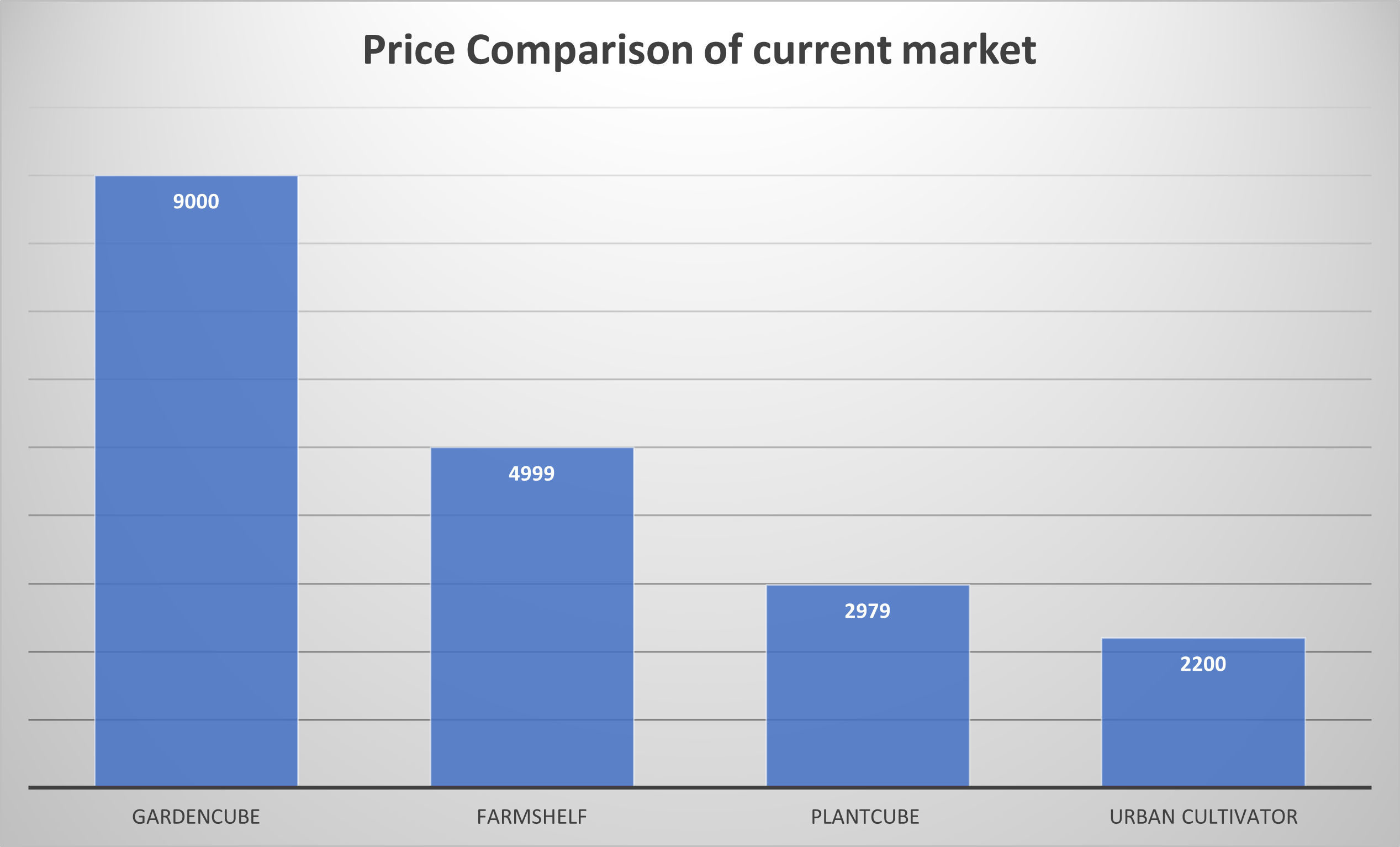
The Farmself is a hydroponic vertical farming system made for the consumer market. One of the survey questions will be about the maximum amount space the participants are willing to allocate to the a vertical farm. Like the other farms discussed above, the biggest obstacle for the buying the Farmself is its price, 5000 euro + 70 euro monthly subscription. But is does come with all sorts of handy features like automatic water circulation, a camera, pH and PDS sensors and an app. Farmself uses drip irrigation to supply nutrients to the plants.
After conducting a thorough market analysis, we identified four prominent vertical farms that are currently available for home and commercial use. To compare the options, we examined both their prices and functionalities. As shown in the table below, all of the systems share four basic functions: automatic watering, programmable lighting, humidity control, and automatic nutrient dispersion.
Among the options, the Plantcube stands out as one of the most advanced consumer vertical farms. Its automated system tracks the plants grown within and determines the optimal climatic conditions, making it easy for users to achieve optimal growth with minimal effort. Although it is priced at 2979 euros, with an additional monthly subscription of 45 euros for the app feature.
Another advanced system is the Gardenchef, which offers a wide range of features, including automated water and nutrient supply, pH and TDS sensors, humidity and lighting control, and more. However, with prices ranging from 9500 to 19500 euros, the Gardenchef may not be accessible to everyone. Moreover, unlike the envisaged prototype, the Gardenchef does not use hydroponic growth.
In contrast, the Farmself is a hydroponic vertical farming system specifically designed for the consumer market. Equipped with automatic water circulation, a camera, pH and PDS sensors, and an app for remote monitoring and control, the Farmself offers a convenient and efficient growing system. Although it starts at 5000 euros, with a monthly subscription of 70 euros, the Farmself is still a more affordable option than the other advanced systems on the market.
In conclusion, our analysis highlights the importance of having certain key functionalities in a vertical farming system, such as automatic watering, humidity control, automatic nutrient dispersion, and programmable lighting. These functionalities are essential for ensuring healthy plant growth and maximizing yields, regardless of the specific system being used. It is important for potential buyers to carefully consider these functionalities when making a decision on which vertical farming system to invest in. Additionally, the Farmself prototype stands out as a promising option, as it offers all of these key functionalities in an affordable and user-friendly package. With the Farmself, consumers can be assured that they are getting a vertical farming system that meets their needs and delivers healthy, high-quality produce.
| Name | Price | Automatic Watering | Programmable Light | Humidity control | Automatic Nutrient | Phone App | Monthly subscription |
|---|---|---|---|---|---|---|---|
| Farmshelf | 4999 | ✓ | ✓ | ✓ | ✓ | ✓ | ✓ |
| Urban cultivator | 2200+ | ✓ | ✓ | ✓ | ✓ | x | x |
| Gardencube | 9000 | ✓ | ✓ | ✓ | ✓ | x | x |
| Plantcube | 2979 | ✓ | ✓ | ✓ | ✓ | ✓ | ✓ |
Who are the users
Primary users
Those who use home vertical farming systems for personal use, typically to grow fresh produce for themselves and their families. The main beneficiaries of sustainable food production and indoor growing opportunities offered by the system. This is mostly anyone who is interested in indoor gardening, expirementing with growing produce using technology.
- City person: People who live in apartments with limited outdoor space in urban areas. They may be interested in vertical farming as a way to grow their own fresh produce without the need for outdoor land.
- Gardeners: Home gardeners who are interested in experimenting with new growing techniques and maximizing their indoor space may find home vertical farming systems to be an appealing option.
- Environmentalists: People who are interested in reducing their environmental impact and promoting sustainable food production may be drawn to home vertical farming as a way to reduce reliance on industrial agriculture.
- Health-conscious individuals: People who prioritize health and nutrition may be interested in home vertical farming as a way to ensure a consistent supply of fresh produce throughout the year.
- Technology enthusiasts: Home vertical farming systems incorporate advanced technology, which may appeal to tech enthusiasts who are interested in experimenting with new technologies and methods of food production
Secondary users
Those who use the home vertfical farming system for other purposes, such as education, community outreach and expirementation.
- Schools and other educational entities: Home vertical farming systems can be used in schools and educational institutions to teach students about sustainable food production and encourage healthy eating habits.
- Restaurants: Small-scale vertical farming systems can be used by restaurants and cafes to grow fresh herbs and vegetables for use in their dishes.
- Communities: Home vertical farming systems can be used by community organizations to provide fresh produce to local residents and promote sustainable food production.
- Gardening enthusiasts: People who are interested in indoor gardening or horticulture may use home vertical farming systems as a way to experiment with new growing techniques or grow exotic or hard-to-find plants.
Tertiary users
Those who benefit from the positive externalities that result from the use of the system, often at a broader societal or systemic level.
- Health insurance companies: Health insurance companies may indirectly benefit from home vertical farming systems by promoting healthy eating habits among their policyholders, potentially reducing healthcare costs associated with diet-related diseases.
- Real estate developers: Real estate developers may indirectly benefit from home vertical farming systems by promoting sustainable and eco-friendly features in their buildings, potentially increasing property values and attracting environmentally conscious buyers.
- Local governments: Local governments may indirectly benefit from home vertical farming systems by promoting sustainable food production practices, potentially reducing the burden on municipal waste management systems, promoting local economic development, and improving community health outcomes.
Downsides
- High cost: The technology used can be expensive. This could be a barrier to entry for some individuals, limiting acces to the benefits of indoor farming.
- Energy usage: This system requires constant source of energy to power lights, climate control, and potential other equipment. This could therefore lead to a higher energy usage and energy bill.
- Limited crop variety: The crops that can be grown are limited to the space available in the farming system. Crops with large roots, big canopies or bushes are quickly limited in space.
- Maintenance: Home vertical farming systems require regular maintance and monitoring to ensure propwer growing conditions and prevent pests and disease. This can be time consuming and may require a specialized skill.
- Technical challenges: This system may involve complex technical systems and equipment, which can be challenging to setup and troubleshoot for individuals without any prior technical experience.
While there are many potential users of this project, our main focus is on hobbyists. According to Stebbins (1982), hobbyists are individuals who approach their pursuits with a high level of commitment and take them seriously, even though they are not compelled to engage in them by any sense of obligation or necessity. In the case of this hydroponics system, hobbyists are individuals who are interested and involved in the agriculture sector.
Research by Jansen et al. (2016) found that individuals with expertise in this particular field tend to be less reliant on automated systems. However, participants in the study also mentioned that lack of time often prevented them from properly taking care of their plants. Therefore, a partially automated system that involves the user but does not fully rely on them would be most appropriate.
However, the research also revealed that participants were not willing to acquire such a system at the moment due to cost concerns. The objectives of this project are to address these particular problems, especially for hobbyists who want to be involved but have time constraints.
Survey
A user study was conducted to gain a deeper understanding of the preferences of the target group. The study involved a survey with thirteen questions, the first seven of which were general inquiries. These questions aimed to elicit participants' attitudes toward vertical farming and eco-friendly practices, as well as their interest in growing their own food products. The responses to these questions could shed light on the potential motivations for purchasing a vertical home farm.
Another question inquired about the benefits and challenges of vertical farming compared to regular gardening, which could reveal the main obstacles to buying an indoor farm. The eighth question focused on the type of vertical farm preferred by participants, including the desired crops, soil type, and aesthetic preferences. These responses would be considered in determining the design specifications and features to include in the prototype.
Question nine sought to identify essential features for the prototype, such as automatic lighting, nutrient supply, and cameras. The survey concluded with questions about the participants' investment willingness, including monetary expenses, time, and space investment. The high prices of existing home vertical farms are a significant barrier to purchasing them, which is important to consider.
The user study had four participants, all of whom were members of the target group with an interest in gardening or farming. Two participants had studied biology in college, while the other two were enthusiastic hobby gardeners.
Results
After conducting the user interviews, the results were synthesized into an affinity diagram. Affinity diagrams are a tool for categorizing and organizing information provided by the user, which allows us to gain a holistic view of the data without needing to repeatedly review the individual user interviews. Overall, by analyzing and synthesizing user data, the affinity diagram allowed us to draw conclusions and make informed decisions based on their feedback in the design/prototyping phase. Detail on the responses is described as follows:
- The participants attitude towards the technology of vertical farming is generally positive, the main reason being that it saves space. Higher crop yield, positive environmental impact and the easy to reach height of a vertical are mentioned as additional advantages of vertical farming compared to traditional methods. Listed drawbacks are the start-up costs, high energy consumption due to the lack of sunlight and vertical farming not being a natural way to grow plants.
- The opinions on the preferred type of vertical farm vary. Two participants prefer hydroponic soil, while the other two would like to see a land based soil. The potential users would like to grow all sorts of products such as vegetables, herbs and microgreens. One participant indicated that the farm shouldn’t have sharp corners, because it would make cleaning much harder. Another would like the vertical farm to have the shape of a Ferris wheel.
- The four participants also indicated which potential features of a vertical farm they would like to be autonomous and which could be more interactive. Water- nutrient supply, light- temperature- and humidity- control should be autonomous and are all necessary features of an efficient vertical farming system according to the participants. Planting, seeding and crop health monitoring don’t have to be autonomous. An mobile app to monitor the system is nice bonus but not absolutely necessary for most participants.
- The monetary investment that the participants are willing to make isn’t high compared to existing vertical farms with automatic functions. Two participants didn’t want to spend more than 100-150 euros on a vertical farm, one didn’t mention a concrete amount but said it shouldn't be too much and the last would spend up to 1000 euros if an outside garden wasn’t available. The existence of free or cheap regular gardens (moestuintje) is probably the main reason. Investment in time varies between two and six hours per week and the vertical farm shouldn’t cover more space than a few square meters. Three out four would prefer the system to be modular. Because this makes it easier to buy an extension. The result of the survey are summarized in the following affinity diagram.
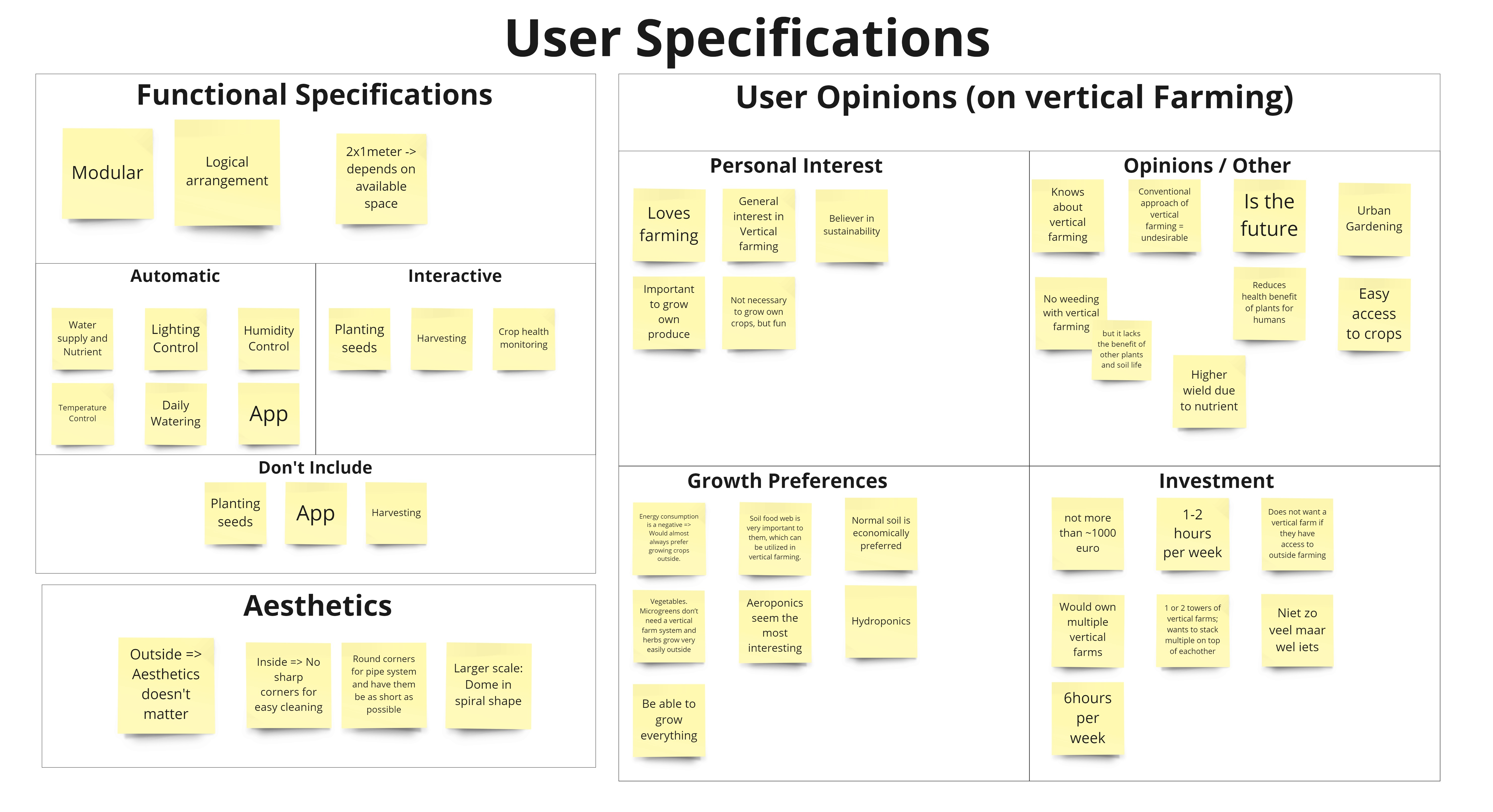
What do they require
To create an optimal home vertical farming system, several key components must be considered. These include lighting, growing medium, nutrient delivery, ventilation, temperature and humidity control, monitoring and control systems, and structure and support.
Lighting
is critical for indoor plants, and LED grow lights are a popular choice due to their energy efficiency and ability to provide the right spectrum of light for plant growth.
Growing medium
Plants in a vertical farming system require a growing medium to support root growth and nutrient access. Soilless mixes, such as coconut coir or perlite, and hydroponic systems are common growing media options. A consistent source of nutrients is also essential for plant growth and development.
Nutrient delivery system
Nutrient delivery systems can vary and may involve automated dosing systems or manual nutrient solutions. Adequate air circulation and ventilation are important for maintaining healthy growing conditions and preventing moisture and odors. Fans or other ventilation systems may be required. Temperature and humidity control systems, such as heaters, air conditioning units, or humidifiers, may be necessary to prevent fluctuations that can affect plant growth. Monitoring and control systems, including sensors and automated control systems, can track environmental conditions and adjust lighting, nutrient delivery, and other factors as needed to optimize plant growth.
Structure
Finally, a sturdy and stable structure, such as shelving units or vertical grow towers, is necessary to support the weight of plants and equipment in a vertical farming system.
MoSCow
The requirements will be established via the MoSCow method, it is a prioritizing technique to determine the importance of project requirements. The requirements, in this case, are based on the users relevant for this product. The name "MoSCow" is an acronym for:
- Must have: are essential requirements and must be included in the project. Without implementing these requirements, the project cannot be considered succesful.
- Should have: are important requirements but not as critical as the must have requirements. If these requirements are not included, it will still be considered succesful.
- Could have: are desirable requirements, but not necessary. They are nice-to-haves, and can be included if time and resources allow it.
- Won't have: are requirements are those that will not be included in the project, either because they are not important or because they are out of the scope of this project.
The MoSCow method is helpful, because it helps us to prioritize requirements and make informed decisions about what to include in the project. The requirements for this project can be seen in figure 2, the should-have part is integrated with the must-have section. The requirements are mainly based on the user research and the survey conducted, as it is of importance to know what the user want.
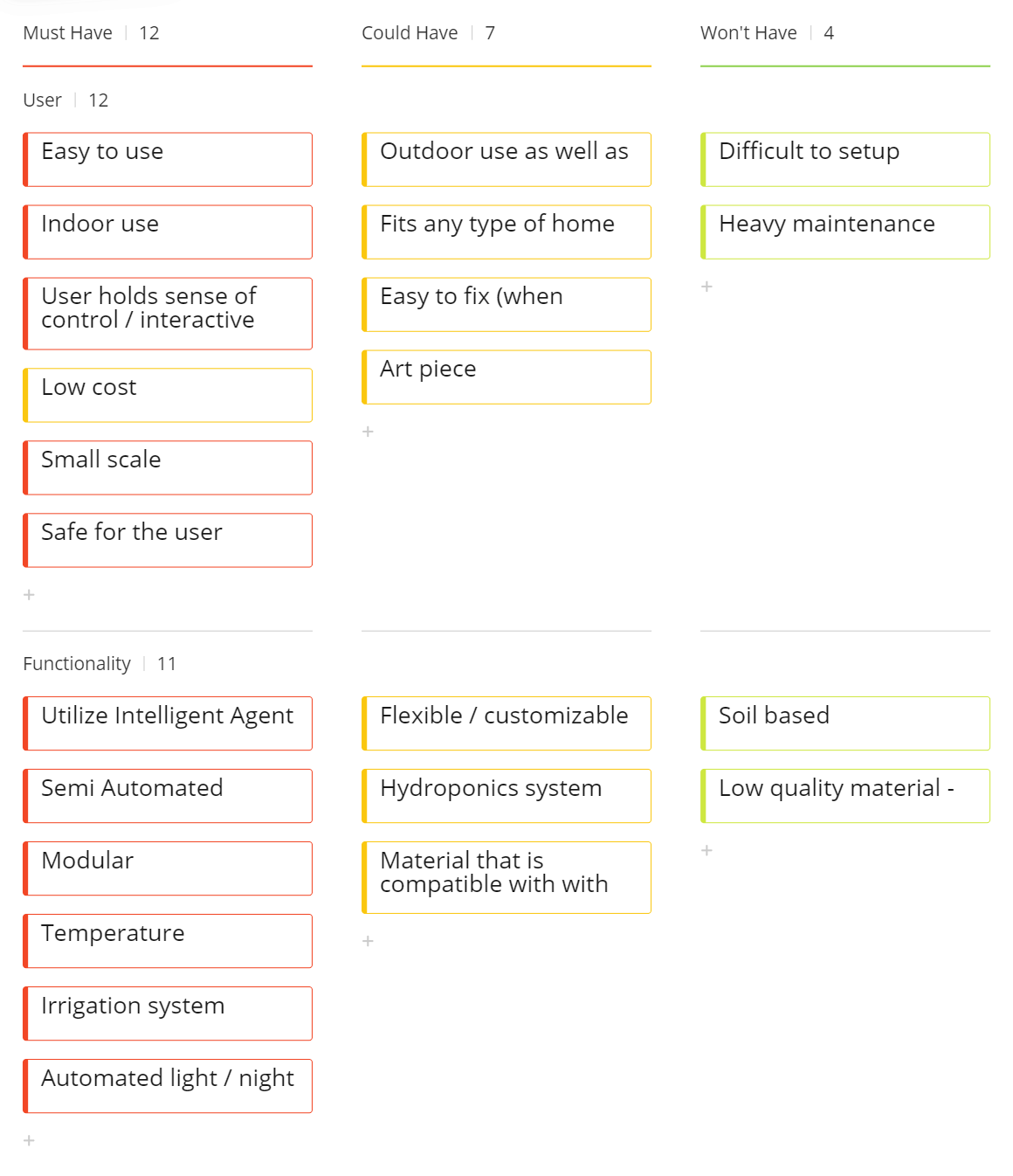
Prototype
Prototype Design Process
Preliminary Designs
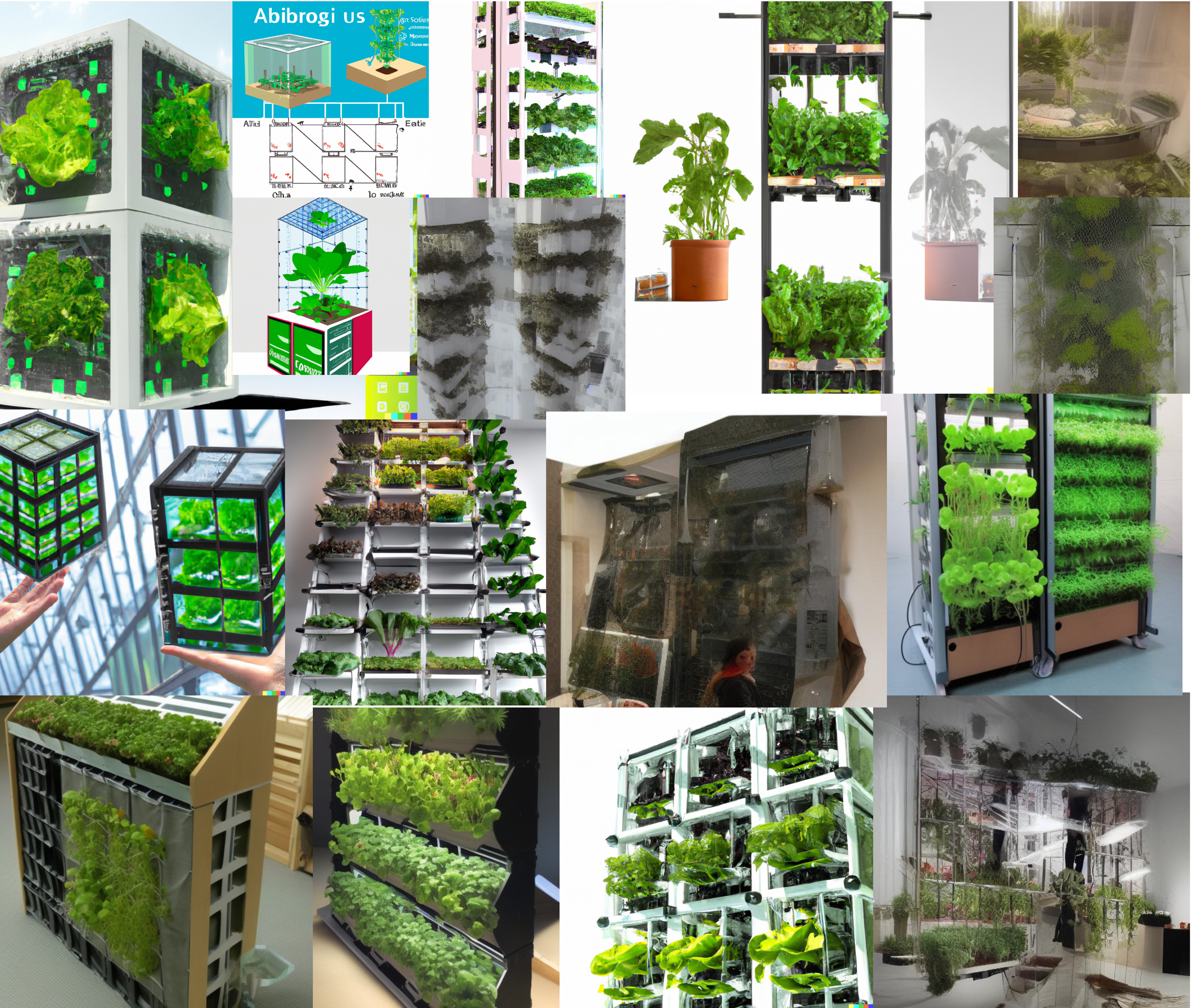
The preliminary designs generated were done without utilizing the user tests as they were conducted after. The following steps were taken:
Image generation
Figure 3 shows a collage of images generated by DALL-E and dreamstudio and stable diffusion. To start off the preliminary design process, these tools were utilized as they can often generate a large sum of concepts with minimal effort, and perhaps give different insight based on what already exists. Additionally, it tends to be easier to critique and edit other concepts rather than to start from scratch where it was easier to pinpoint likes and dislikes. On top of this, it helps kick-off the creative process.
Elements that were liked include the geometric and glass designs, as well as the simple white designs that gave the products a clean and hygienic appearance. These elements combined bring elements of cleanliness and nature together in a way that compliments the products purpose (indoor farm). Additionally, recurring elements in the generate images included the products stackability, slimness, and that all the plants grew to one side, allowing them to be placed against a wall.
Analysis of pre-existing Vertical farms
To gain an overview of what already exists in the market and the different choices made by different designers, a collage was made of various existing products (seen in figure 3). Most products utilize a sleek design and more minimalist design. The products all include some form of stacking, where the plants were grown above each other with a water reservoir at the bottom. Generally speaking, these designs seem to fit the generic modern home, where the more extreme designs tend to be for outdoor vertical farms.
To get a more in-depth analysis on these existing vertical farms, an analysis on two visually different farms was conducted, with further insights found from their websites or YouTube (as seen in figure 4). They seem to hold slightly different target audiences based on their aesthetics, as their products are placed in different styled homes (one being more minimalistic and one being more futuristic while both still being modern. However, the two main distinguishers between the designs is the location of the LEDs and the plants, where one is organized in rows and the other in columns. They both have the water reservoir at the bottom (hydroponics) and don’t utilize a screen, although one does come with an app.
-
Figure 3: existing products
-
Figure 4: analysis on two different products
Thumbnail Sketches
Based on the analysis, thumbnail sketches were made in figure 5. Thumbnail sketches are sketches that are small and done quickly to gain as much variety as possible. Furthermore, designs that were not considered by other products were created as well (such as experimenting with potentially more qualitative interactions with the cat sketch). The reason for doing this was similar to the AI image generation, as it allowed for the output of a variety of different designs.
-
Figure 5: thumbnail sketches
In depth sketches
-
Figure 6: preliminary sketch 1
-
Figure 7: preliminary sketch 2
-
Figure 8: preliminary sketch 3
I took three different designs from the thumbnail sketches and upscaled them, adding detail. They can be seen in figure 6, 7 and 8. However the approach taken thus far lead to limitations in innovation, as it bases the design on pre-existing products than from unique insights from the user. Thus, to help mitigate this limitation, a user study was conducted (the survey presented prior).
Final Design
By incorporating the user interviews, the the final product design was created.
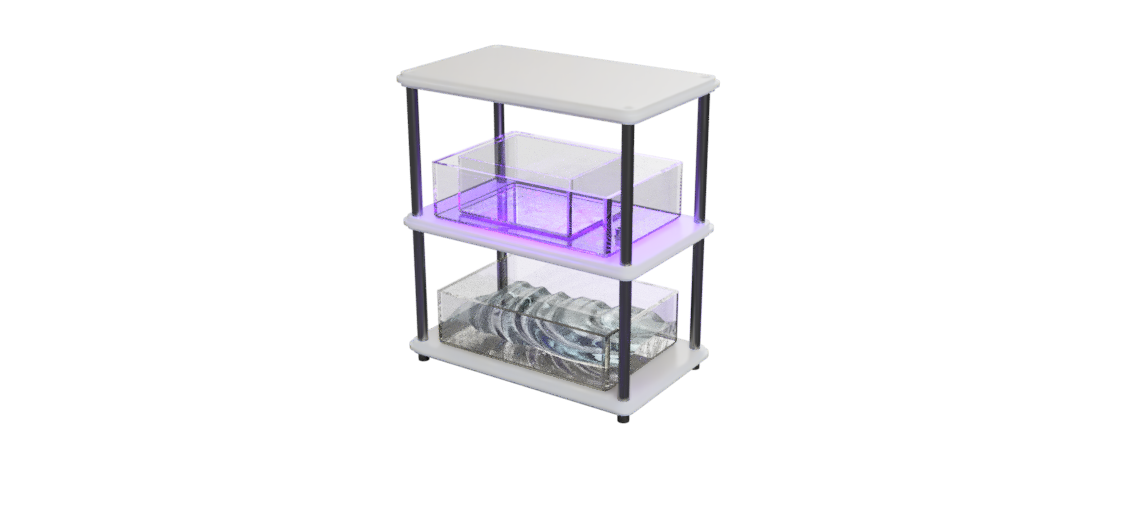

The explicit elements incorporated into the final design are the following; modularity, size, and easy access to the plant trays. Furthermore, considerations for what elements they wanted automated and interactive were considered as well. The users also mentioned that they wanted a logical arrangement with regards to the trays, however also specified more eccentric design choices, such as a spiral design or a Ferris wheel design or a more rounded and circular design. To incorporate both specifications, and also placing functionality slightly above aesthetics (as some users also specified the exterior not being important), the design holds a simple rectangular design, with rounded corners and rounded elements (such as a circular door handle). Some elements from the preliminary design process were incorporated as well, such as the color scheme and the simplistic modern design that fits modern day interior design. These design elements can be depicted in the final CAD model (see figure 9, 10, and 11).
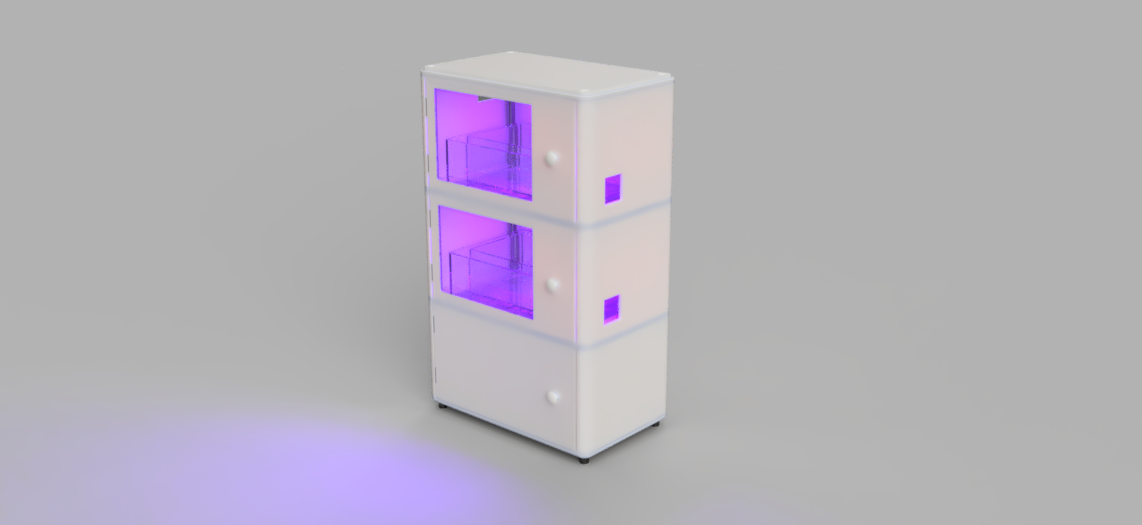
However due to financial and time constraints, a large sum of elements were ignored. This includes the material being MDF and the shape being cubic (no rounded edges). Where the growing trays were cut up boxes from action and the electronics were not properly concealed. However, the final prototype includes several notable elements such as modularity, size, easy access to the trays, and level of interactivity.

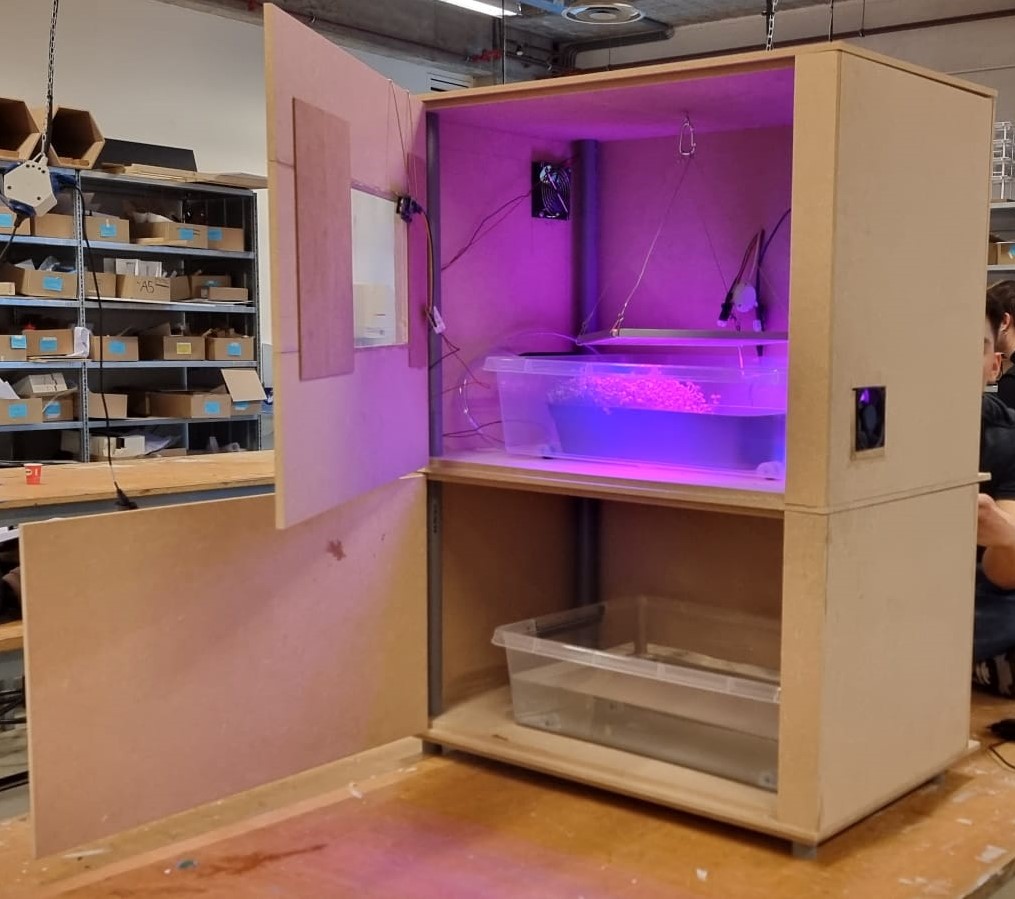
Hardware
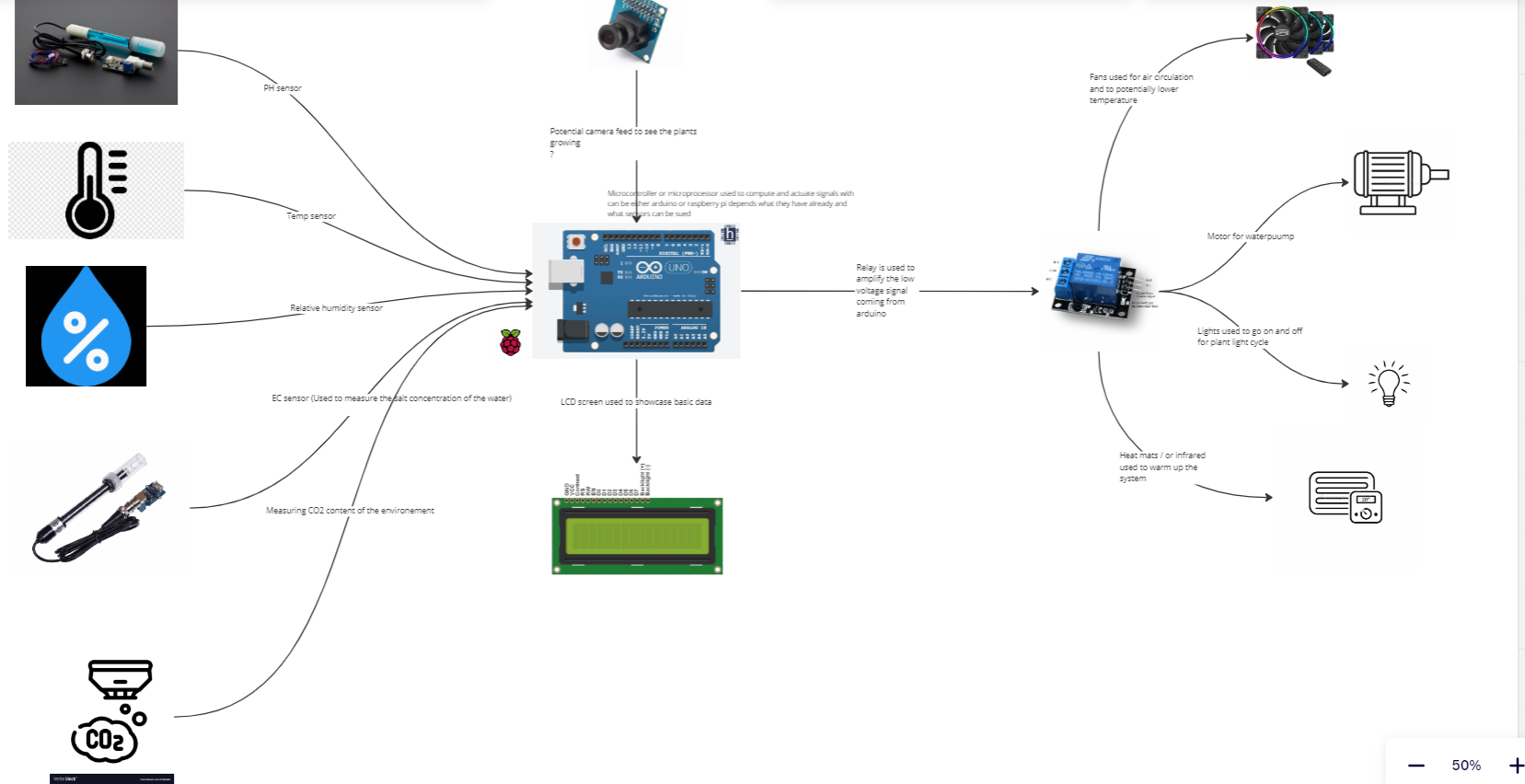
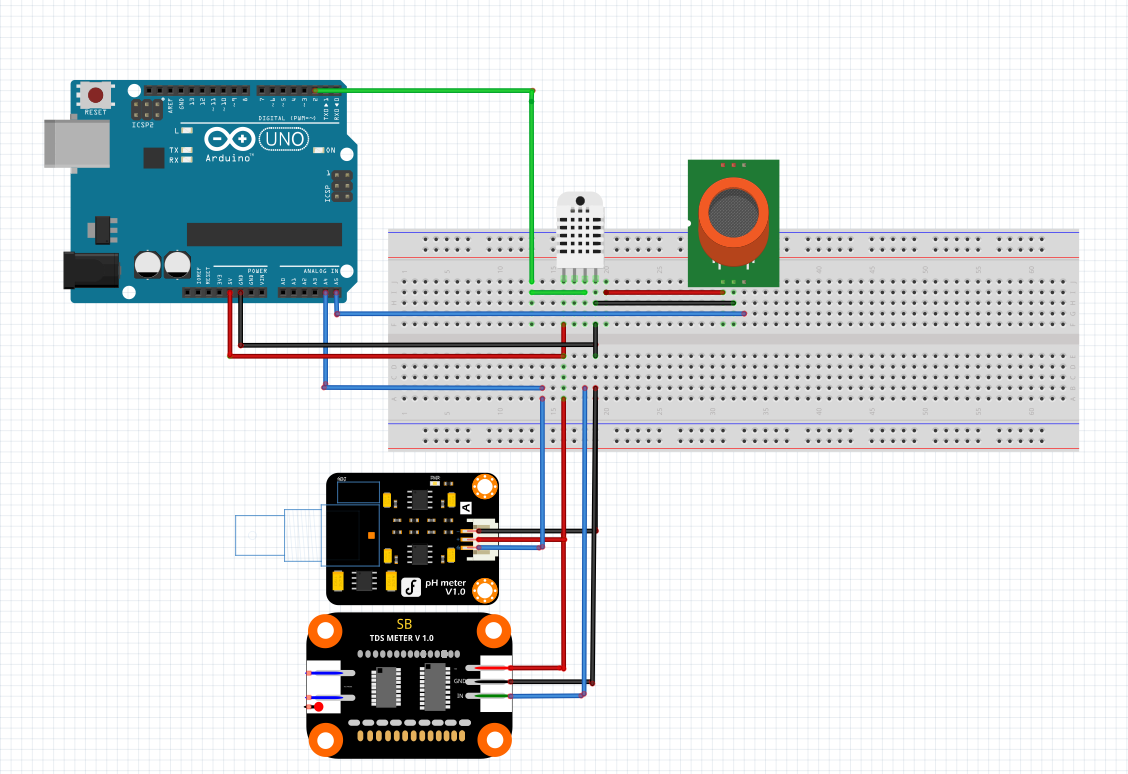
Sensors
- Temperature/Humidity Sensor
Maintaining an optimal temperature is crucial for the growth of microgreens as it affects the rate of germination and growth of the crops (Allred & Mattson, 2021). To ensure that the temperature conditions are suitable for the microgreens, we have incorporated a temperature sensor into our setup (see figure 18). Moreover, the sensor also features a humidity sensor (see figure 18). The humidity levels can significantly influence the germination and growth of the plants, just like the temperature. For microgreens, achieving an optimal humidity level of around 100% relative humidity is critical for successful germination (Rusu et al., 2021). This indicates that high humidity is necessary for successful germination, thus, crucial in the system. After germination, microgreens flourish with humidity levels between 40 and 60% (Abajeeh, kingston, Harty, 2023). Temperature levels should be around room temperature, approximately 18°C at night and 20°C at daytime (Khan, Vadsaria, 2020). Furthermore, increasing the temperature and humidity past its optimal boundaries raises the risk of pest and disease issues.
- PH Sensor
The ideal pH level plays an essential role for growing microgreens as it impacts the nutrient accessibility in the substrate, ultimately influencing the growth and nutritional value of the microgreens (Palmitessa et al., 2020; Renna et al., 2020). Moreover, according to Palmitessa et al.’s (2020) a variety in nutrient solution strength had an effect on yield and quality parameters, along with physiological behavior and certain quality characteristics of the microgreens. Adequate pH range between 5.5 and 6.5. Because of its importance, we have chosen to implement a pH sensor into the system (see figure 16). If pH levels are too low, alkaline drops can be added to the nutrient solution. This pH control isn't automated.
- CO2 Sensor
Another important factor to consider when growing microgreens is the level of CO2. CO2 is widely recognized as a crucial component in the process of photosynthesis. Studies have shown that increasing CO2 levels can increase the yield and nutritional value of microgreens (Eissa et al., 2019). However, it must be noted that too much CO2 can also have negative effects on the plant growth and quality. Thus, it is essential to maintain an optimal CO2 levels using sensors (see figure 17).
-
Figure 16: pH sensor
-
Figure 17: CO2 sensor
-
Figure 18: Temperature/Humidity sensor
Computing
- Arduino Uno
The Arduino is a microcontroller-based platform that provides an easy-to-use and versatile environment for building electronic systems. Its main purpose is to act as a brain for electronic systems by processing input signals from various sensors and generating output signals to control various actuators. The sensors measure various physical and environmental parameters. These signals can be processed by the Arduino to activate certain actuators. The selected microcontroller for this project is the Arduino Uno, as it meets all the necessary requirements as demonstrated in figure 19.
-
Figure 19: Arduino uno
Actuators
- Water pump
The hydroponic system during this project utilizes an ebb and flow method. Ebb and flow system can regulate the water according to the needs of the crops, thus contributing to a reduction in overall water consumption (Ferrarezi et al., 2015). Furthermore, Thomas (1993) states ebb and flow systems have been linked to a reduced incidence of foliar diseases, as well as lower risk of water contamination. This method involves two distinct phases: flooding and draining. During the flooding phase, water is pumped from the reservoir to the microgreens. This process continuous until a predetermined point, which is determined by the valve's height, is reached. Subsequently, the water is drained back into the reservoir.
Therefore, the water pump chosen, see figure 20, is of importance as it circulates water to the plants.
- Light
While no light is required during germination phase of microgreens, similar to other plants, they require light for the process of photosynthesis, which promotes their growth and flavor development. During this project, specifically LED lights are chosen, due to the low radiant heat emission, high emissions of monochromatic light, photon efficiency, long life expectancy, flexibility and mechanical robustness (D'Souza et al., 2015). In addition, given the increasing energy costs, the employment of LED lightning may be advantageous owning to its energy efficiency (Yeh & Chung, 2009). No definitive light cycle has been identified by literature as the most optimal, thus during this project the most common light cycle profiles are provided for the user. Previous research has shown, that light quality and quantity both exert significant effect on the plants morphology (Cope & Bugbee, 2013; Bantis, 2021). Regarding light quality, the growth of plants is mainly influenced by red and blue regions of light as they are the wavelengths where chlorophyll pigments absorb the most (Lin et al., 2013). The lights chosen for this project, see figure 21, have a combination of both red and blue lights. Additionally, the height of the light is important as this determines the light intensity. During her cultivation journey, Saša (2021) determined that the optimal height, for LED lights, for a variety of microgreens was approximately 22cm. Lastly, Utilizing LED lights can be regarded as an efficient and promising strategy to cultivate microgreens with higher nutritional value, therefore it has been decided to choose artificial lights.
- Humidifier
In order to regulate the humidity in the vertical farm, a humidifier was acquired (see figure 22). The humidifier consists of a round ultrasonic module attached to a power supply. The module is placed on a wet surface, for example a sponge. It creates high frequency ultrasonic vibrations, which causes the water to break up in droplets. Because of their large surface area, these droplets will absorb heat from the surrounding air, causing them to evaporate. Since evaporation costs energy, a turned on humidifier will cause the system to cool down.
- Fans
The fans utilized in the current system are illustrated in figure 23. These fans play a critical role in regulating temperature, humidity, and air circulation within the system, thereby contributing to the overall success of the cultivating process. They create an air flow in and out of the system, causing the climatic conditions inside to be more similar to the outside space. For example, after the germination the fans can be turned on the lower humidity of the vertical farm.
-
Figure 20: Waterpump
-
Figure 21: Lights
-
Figure 22: Humidifier
-
Figure 23: Fans
-
Figure 24: Water tube
Other
- LCD Screen
The project's objective of ensuring user-friendliness led to the adoption of an LCD screen (see figure 26). The LCD screen provides a platform for the user to the view data from all sensors and to interact with. For instance, if the LCD screen displays that the pH water is deviating from the optimal point, the user can decide to refresh the water. By default, the LCD displays the measured temperature, humidity, gas sensor value and PH level of the water.
-
Figure 25: LCD screen
Engineering Problems
Climate control and scalability
The current system is designed to be modular, allowing for the boxes to be stacked on top of each other, and the user can decide on the number of levels based on various factors, including their living space, desired crop yield, and financial constraints. At present, the prototype includes only a small amount of actuators and sensors that are linked to an Arduino. However, connecting multiple levels to a single Arduino presents a challenge due to limited inputs and rapid scaling of sensor outputs.
Controlling the environment in a vertical farm can be challenging, especially when stacking multiple layers. One solution to this control system problem could be to use a centralized system that can monitor and control the environment of the entire vertical farm.
This centralized system would involve the use of sensors placed strategically throughout the vertical farm to monitor temperature, humidity, and airflow. The sensor data would then be transmitted to a central control unit that would use the data to regulate the environment of the entire farm.
To achieve this, the control unit could be equipped with advanced algorithms that use the sensor data to make real-time adjustments to the environmental conditions in the farm. For example, if the temperature in a particular area of the farm is too high, the control system could adjust the fans or air conditioning to bring the temperature down.
Additionally, the control system could be designed to alert operators when the environmental conditions in the farm fall outside of a specified range. This could be done using email or SMS notifications or through a visual display on the control unit.
Another approach to solving the control system problem in a vertical farm would be to use a distributed system. In this approach, each layer of the vertical farm would have its own set of sensors and control system, which would be responsible for regulating the environmental conditions in that particular layer.
The data from each layer's control system could then be transmitted to a centralized system that would provide an overall view of the environmental conditions in the vertical farm. This approach could be beneficial for larger vertical farms, where a centralized system might not be able to effectively regulate the environment in every area of the farm.
Overall, the key to solving the control system problem in a vertical farm is to use a system that can effectively monitor and regulate the environment, while also providing operators with the necessary information to make informed decisions about the operation of the farm.
Clogged Tubes
Although tube clogging is not a common problem in vertical farms, it is still important to consider. In hydroponic systems, tube clogging can be caused by factors such as algae blooms or loose growing medium. Algae thrives in hydroponic environments where water temperature, exposure to sunlight, and an ample supply of nutrients create ideal conditions for growth and multiplication. Additionally, disintegration of small particles from the growing mat can accumulate over time and cause tube clogging. This can require the user to clean the tubes and other components, which may not be user-friendly. To prevent clogging, regular maintenance and monitoring of the hydroponic system's environmental conditions and nutrient levels are necessary.
Mold prevention
Preventing mold production in a vertical farm requires proper management of temperature, humidity, air flow, and lighting conditions. Here are some strategies that can be used:
- Temperature Control: Mold thrives in warm and humid conditions, so it's important to maintain a consistent temperature throughout the vertical farm. Ideally, the temperature should be kept between 18 to 26 degrees Celsius.
- Humidity Control: Maintaining proper humidity levels is crucial in preventing mold growth. A relative humidity of 50% to 60% is recommended for most crops. If the humidity is too high, it can be controlled by using dehumidifiers or ventilation fans.
- Air Flow: Good air flow can help to prevent the accumulation of moisture, which can lead to mold growth. Proper ventilation is essential to ensure that air circulates freely within the vertical farm. Exhaust fans and intake vents can be installed to provide a steady flow of air.
- Lighting: Proper lighting is important for plant growth and development, but it can also impact the growth of mold. Too much or too little light can promote mold growth. It's important to provide the right amount of light for the specific crop being grown.
- Cleaning and Sanitization: Regular cleaning and sanitization can help to prevent the growth of mold. All surfaces and equipment should be cleaned thoroughly and regularly to remove any potential sources of mold growth.
Software
Control
Arduino control
The Arduino Uno is the sole system responsible for receiving sensor inputs and providing actuator outputs. All sensors are connected to the Arduino by two power pins and a signal pin. The actuators can be split into two groups: The 12V DC actuators and the AC actuators. The 12V DC actuators are the fans, pump and humidifier. They are connected with an external 12V DC voltage source to a switch circuit utilizing an NPN transistor, the gate of which is connected to the Arduino. Only when the Arduino sends a high input signal to this transistor will it conduct, causing the actuator(s) to turn on. Using multiple of these circuits its possible for the Arduino to individually turn actuators on or off according to the sensor inputs and desired levels.
The AC actuators include the lights and heat mats of the farm. Because they require high AC voltages, they cannot be controlled by a simple transistor circuit. Therefore they are controlled via a relay. A relay is an electronically operated switch that permits the control of high current loads with a small electrical current. Due to the high current demands of some actuators, a relay is essential as it provides a secure and efficient means of switching such loads. The specific relay can be seen in figure 26.
-
Figure 26: relay
PID control
It was originally planned to utilize PID controllers for regulating temperature and humidity within the vertical farm. This form of controller would be effective at minimizing errors and deviations from a certain set point of a parameter. However, it was later decided to not have any integral or derivative control. The reason for this is because of the actuators, which are not suitable for this type of control. In order to properly regulate i.e. the temperature, the controller would send PWM signals of varying duty cycles, which actuators like the fans are not optimized for. Instead all actuators in the vertical farm should either be turned fully on or fully off. PID control is also very useful for maintaining a singular value for a parameter, which is in contrast with our design choice to have temperature and humidity be regulated within a certain range of values. In conclusion, there is no possibility nor need for such an accurate controller in the system.
Control Loop:
Humidity Control Feedback Loop
The basic feedback loop for controlling humidity in a vertical farm involves a sensor that measures the humidity levels in the air, a controller that receives input from the sensor and determines if the humidity is too high or too low, and an actuator that adjusts the humidity levels to achieve the desired setpoint.
The controller compares the current humidity level with the desired range of humidity. If the measured humidity is too low, the controller will turn the humidifier on. If it is too high, the controller will turn the fans on to circulate less humid air from outside the farm in. If the humidity is within acceptable range, both actuators are off by default.
Temperature Control Feedback Loop
The feedback loop for controlling temperature in a vertical farm is similar to the humidity control feedback loop. A sensor measures the temperature in the air, a controller receives input from the sensor, and an actuator adjusts the temperature to achieve the desired setpoint.
The controller compares the current temperature with the desired range for temperature. If the measured temperature is too low, the controller will turn on the heat pads at the base of the farms upper level. If it is too high, the controller will turn on the fans to circulate the warm air out of the farm. If the temperature is within acceptable range, both actuators are off by default.
It is of note that both the temperature and humidity control loops utilize the fans to regulate their respective levels. This could case a clash in control; In a situation were the air inside the farm is too hot but has a low humidity, the fans should be turned on to lower the temperature, while at the same time the humidifier should be on and the fans turned off, to not ventilate the newly humidified air. It was decided that for the fans to be turned on, both the temperature and humidity have to be above preferred levels at the same time.
CO2 Control Feedback Loop
The feedback loop for controlling CO2 levels in a vertical farm is a bit more complex than the previous two. A sensor measures the CO2 levels in the air, a controller receives input from the sensor, and an actuator adjusts the CO2 levels to achieve the desired setpoint. However, an actuator to regulate the CO2 levels was not implemented in the prototype, but the system does relay a warning message when CO2 levels get too high.
The controller compares the current CO2 level with the desired setpoint and calculates the error. The controller then sends a signal to the actuator, which can be a system that injects CO2 into the air or a system that vents out excess CO2, to adjust the CO2 level accordingly. The controller continuously monitors the CO2 level and makes adjustments as needed to maintain the desired setpoint.
Overall, the feedback loops for controlling humidity, temperature, and CO2 levels in a vertical farm using climate control are essential for maintaining optimal growing conditions for plants. By continuously monitoring and adjusting these variables, the feedback loops ensure that the plants receive the ideal conditions for growth and yield.
Code
The code for the Arduino is fairly straightforward and can be viewed here: https://github.com/paulx25/vertical_farm_final . It consists of a few distinct parts:
- Time: At the start of each loop, the Arduino reads the current time from an external source.
- Read: Next, the Arduino updates the values for measured temperature, humidity, PH and gas levels from the sensors.
- Display: The LCD display is updated, showing the most recent value for temperature, humidity, PH and gas levels.
- Control: Through a series of simple if-else statements, the actuators are turned on or off depending on the previous variables. Warning messages are printed if the PH or gas levels are inconsistent. The lights and pump are turned on or off depending on the time of day.
Because the lights and pump are turned on or off based on a 24 hour cycle, it is of importance for the Arduino to always have the current time. The Arduino cannot do this by itself, meaning that an external module is needed for this. For the prototype this was simply a laptop to which the Arduino was connected, but a smaller standalone module such as a DS1307 real-time clock chip would be better.
Cost analysis of the prototype
The total cost for the prototype has come down to a total of €232. A breakdown of materials is shown in the table below.
| Item | Cost |
|---|---|
| Electronics | |
| Arduino | 10 |
| pH sensor | 47 |
| CO2 Sensor | 3 |
| Temp & Humidity sensor | 5 |
| Lights | 30 |
| Fans | 10 |
| Irrigation | |
| Pump | 15 |
| Aerator | 10 |
| Plumbing | 10 |
| Boxes and reservoirs | 15 |
| Raw materials | |
| Wood | 47 |
| Glue and other miscellaneous | 10 |
| Plant material | |
| Seeds | 10 |
| Growing medium & trays | 10 |
| Total cost | 232 |
Crops
During this project is has been decided to grow microgreens, mainly due to the time constraints of this course. The growth time of leafy greens depends on the type of plants and growing conditions.
Albert (2022) provides an overview of commonly grown vegetables, with some taking as little as 30-50 days to mature and others taking even 8-10 weeks or longer. Furthermore, McGinnis and Garden-Robinsons (2022) provide a detailed analysis of lettuce, categorizing it into five groups based on maturity times, with looseleaf lettuce being the shortest at 40 to 50 days and ice berg lettuce taking up to 80 days. In contrast, microgreens have a growing period of only 7-28 days (Di Gioia et al., 2017), making them more suitable for this project’s timeframe. Furthermore, microgreens possess more nutritional value than their mature counterparts. For instance, Weber’s (2017) research demonstrated that hydroponically grown broccoli microgreens had higher nutrient content than the vegetables. Since it takes less time, fewer resources are also needed. Weber (2017) supports this by reporting a reduction in water usage by a factor of 158-236 when comparing the same nutritionally equivalent amount of mature broccoli to hydroponically grown broccoli microgreens. Specifically, radish microgreens (figure 27) will be cultivated during this project, as it has higher nutritional density than their matured counterpart (Xiao et al., 2012) an a short crop cycle. According to the research of Mlinarić et al. (2023) the radish microgreens were ready to be harvested on the seventh day, when they reached the stage with fully developed cotyledons. Jagdish’s (2020) in-depth blog about radishes shows that radish seeds germinate most readily when exposed to constant temperatures of 12 to 23°C and sprout at temperatures as low as 4°C and as high as 29°C. Regarding pH levels, radishes have a high percentage of germination in pH levels 4 to 12, whereas a very low percentage of germination in pH levels 1 tot 3 and pH level 13-14. Most microgreens grow well in relative humidity levels of around 40-60% (Morton & Stretch, 2018). During the germination phase, it is necessary to maintain a higher level of humidity. Finally, it is recommended to maintain a minimum CO2 concentration of 330 ppm during plant growth, as concentrations below this level can seriously impede plant growth and general health (F., 2014). Freddy F. (2014) also states that increasing CO2 concentration levels can lead to higher growth rates and yields. However, the “CO2 Calculator for Grow Room or indoor greenhouse” indicates that a maximum CO2 level of 1500 ppm should not be exceeded, as concentrations above this value can become toxic to plants.
Moreover, to promote a hetereogeneous cultivation, the decision has been made to also cultivate the microgreen cress (figure 28). Similarly as the radish microgreen, it has a short crop cyle. More precisely, the selected cress microgreens depicted in figure 28 have a cultivation period ranging from 3 to 6 days. There are currently not many scientific papers indicating any optimal values for the microgreens cress, however, as many microgreens have similar optimal values we assume and apply the optimal values of the radishes to the microgreen cress.
Although microgreens are being grown for this project, it doe not imply that the system is exclusively restricted to microgreens. The system is capable of cultivating various other crops as well, but some adjustments may be required to optimize the growth of specific crops. For example, cucumbers require other climatic conditions. The temperature inside the farm should be higher, and the medium more alkaline (Singh et al.). It takes more time before cultivation, around 65 days. Furthermore, cucumber plants need quite a lot space, possibly making it necessary to built a bigger vertical farm.
-
Figure 27: Radish Microgreen
-
Figure 28: Cress Microgreen
Discussion
Images and a video of the prototype have been shown to the participants of the user study, in order to gather feedback on the end result of the project. They confirmed that all the features that were necessary in their opinion were implement in the prototype. These features include: water and nutrient supply; light-, temperature- and humidity control. Furthermore, the colored LED light and the small viewing window were appreciated. The potential users also mentioned some improvements of the prototype. Firstly, that the model could be more compact. The prototype still contains quite some empty space, making it bigger than absolutely necessary. They additionally indicated that the use wood could be problematic. This was also noticed during the testing of the prototype, in which the wood quickly became wet. In an actual product, wood should be isolated better or different materials can be used. Because the prototype was built as a proof of concept, it only contains one story. Yield per area can be improved by stacking multiple stories on top of each other. The user feedback has been used to create a CAD model of a new prototype, it is displayed below in figure (…). The structure of the new prototype is made of metal and the sides are covered by white acrylic.
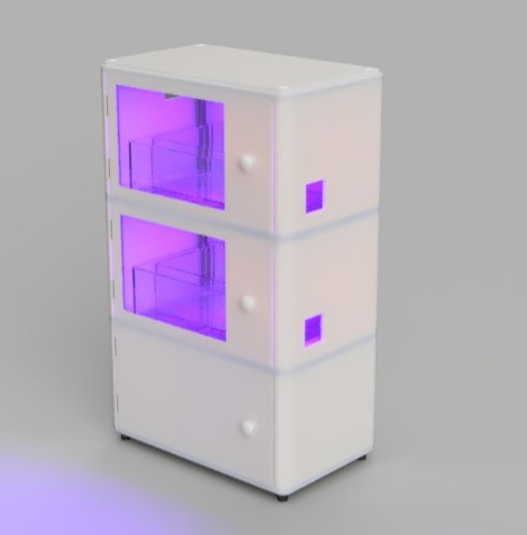
Software
The code written for the Arduino performs well in regulating humidity and temperature. Despite this, there are still improvements which can be made. As expressed in the Prototype section, the fans of the vertical farm are used both when the temperature is too high and when the humidity is too high. If one of these variable is low while the other is high, the system will compromise one these, making for a less efficient system. An alternative way of lowering temperature or humidity, such as entirely different actuators, would solve this problem.
Another problem arises with the desired parameters and light/pump cycles. Not only does the Arduino need access to a real-time clock to determine if the lights should be on or if the pumps should start, but the system also uses the same cycle during both germination and growing of the plants. During germination it would be better for the lights to not be on, as it is not needed in this phase and thus saves energy. The desired humidity level is also different during this phase, being at 90-100%. After the plants have germinated, this drops to around 40-60%. The current system does not account for the difference after germination, and can therefore be improved. As for the clock, a separate module or connection with something connected to the internet like a phone or laptop is needed to track the time and switch the lights/pump on or off at the same times every day.
There are various new functionalities that could be implemented a future prototype. One of them is a mobile app, that is connected to the sensors inside the farm. The app makes it possible for the user to monitor the conditions in the farm like temperature and humidity, while being away from home. A more advanced app could also make it possible to change these climatic conditions from a distance. Furthermore, there can be programmed growth cycles for various plant species inside the app. After selecting the right growth cycle the system will automatically alter the temperature and light cycle to optimal conditions for that specific crop. Installing a camera inside the system is also useful. The camera makes it easier to look closely at the crops, via a display or an app. The device could also be implemented to monitor plant health. For example, to detect drought, fungus or abnormal discoloration. This does require some kind of deep learning image detection algorithm though, (Kulkarni, 2018).
Hardware
Plumbing
The initial design included dedicated drain and flood valves to prevent clogging and ensure smooth water transportation. However, due to time limitations, an alternative method was used which involved replacing the flood valve with a PVC tube. To connect the tube, hot glue was used, which may have a tendency to leak a little over time.
Connection and wiring
For the prototype, the circuits used for switching actuators on/off and for receiving sensor inputs were implemented on a breadboard. It would be better to have soldered these connections on a board or by designing a PCB for this, but this simply was not possible due to time constraints. The ideal solution would be to have one central module integrating the Arduino and all input/output connections without any disconnectable/loose wiring.
PH sensor
The PH sensor implemented in the prototype has some shortcomings in the long run. For example, the sensors would have to be recalibrated when used for the first time or when used after some time. It is possible for the PH sensors to automatically recalibrate itself during measurements based on the temperature of the water, but this requires a separate sensor which relays the water temperature which was not implemented in our design. There is also the issue of cleaning: to function properly the PH sensor needs to be clean, however over time it will get dirty from being submerged in water. It is therefore necessary to clean the sensor, preferably every few weeks.
Economics & Business
The final prototype of our vertical farming system has been produced at a remarkably low cost of under €300, which demonstrates the cost-effectiveness of our design. However, we must note that this figure does not include expenses for manual labor and research and development. To create a market-ready product, additional costs will need to be factored in.
Cost Analysis: Future iterations of our design could potentially utilize alternative materials, which may impact the overall cost of production. At present, the estimated cost of raw materials and components for the new prototype is around €400, which represents a modest increase in costs when compared to the original design. Nevertheless, our product remains a cost-effective option compared to other alternatives in the market.
Open Source Development: To keep costs low and increase accessibility, it may be beneficial to consider open sourcing the development of the control systems for the vertical farm prototype. By following a similar approach as the popular ARDUINO platform, a community of developers could come together to improve and iterate on the initial design, resulting in a cost-effective solution that is widely available to anyone interested in vertical farming.
Open sourcing would allow individuals and organizations to contribute their own expertise and knowledge to the project, leading to a more diverse and inclusive development process. Additionally, it would allow for the sharing of resources and ideas, leading to faster innovation and progress. This could also lead to more widespread adoption of the technology, as it would be more accessible to a larger audience.
Furthermore, open sourcing could also help alleviate some of the costs associated with research and development. By creating a collaborative environment, companies and organizations could share the burden of developing and testing new features and improvements. This could lead to more rapid innovation and a better end product.
Potential Downsides: However, it is important to note that open sourcing also has potential downsides. For example, it could lead to a loss of control over the development process and the final product. Additionally, it could lead to potential issues with intellectual property and ownership of the technology.
Potential Business Setup: The potential business setup for the vertical farming system could benefit from incorporating multiple options to cater to the diverse needs and preferences of customers.
Plug-and-Play Kit Option: The first option for customers could be a plug-and-play kit that is easy to assemble and requires minimal effort from the user. This option could be similar to a DIY kit from IKEA, where all the necessary components and instructions are provided in one package. This option could appeal to customers who are less technically-inclined and prefer a straightforward approach to setting up the vertical farming system.
Open Source Development Option: The second option could involve open sourcing the development of the control systems, which would allow users to invest more time and effort in customizing and modifying the design to better suit their specific needs. This approach could attract a more technically-minded customer base who enjoys tinkering with technology and is interested in the development process itself. This option could also foster innovation and collaboration within the wider community.
Offering both options could help to expand the potential customer base for the vertical farming system, as it caters to different skill levels and interests. It could also help to increase the adoption of the technology by making it more accessible to a wider audience. Furthermore, the open source development option could help to alleviate some of the costs associated with research and development, as companies and organizations could share the burden of developing and testing new features and improvements.
Drawbacks
Due to time constraints, the final testing of the vertical farm was somewhat limited. Ideally, a full growing cycle of microgreens would have been completed with the system operating autonomously. However, the team decided against leaving the farm on campus due to concerns regarding potential water leaks or fire hazards resulting from inadequate wiring. As a result, the testing was limited to a smaller scale to ensure the safety of those involved.
Approach, milestones and deliverables
Week 1 (06/02/23 -> 13/02/23):
- Brainstorm about topic
Week 2 (13/02/23 -> 20/02/23):
- Narrow down to specific concept
- Write out some aspects of the topic
CARNAVAL BREAK
Week 3 (27/02/23 -> 06/03/23):
- Conducting user surveys and MoSCoW
- Research regarding components and crops
- Early prototype designs
Week 4 (06/03/23 -> 13/03/23):
- Obtaining survey results and analyzing feedback
- Ordering components
- Starting on prototype construction
Week 5 (13/03/23 -> 20/03/23):
- Adding research done on wiki
- Creating code for the electronics
- Continuing on prototype construction
Week 6 (20/03/23 -> 27/03/23):
- Creating an electronic system
- Continuing on prototype construction
- Start growing the seeds
- Working on presentation
Week 7 (27/03/23 -> 03/04/23):
- Finalizing Prototype
- Presentation
Week 8 (03/04/23 -> 10/04/23):
- Finalizing Wiki
Task Division
| Name | Total | Breakdown week 1 |
|---|---|---|
| Vietlinh Pham | 2 | Meeting (1h), Group formation (1h) |
| Lars | 2 | Meeting (1h), Group formation (1h) |
| Mauritius | 2 | Meeting (1h), Group formation (1) |
| Paul | 2 | Meeting (1h), Group formation (1) |
| Aloysia | 2 | Meeting (1h), group formation (1h) |
Week 2
| Name | Total | Breakdown week 2 |
|---|---|---|
| Vietlinh Pham | 5 | Literature study(3), Meeting(2h) |
| Lars | 5 | Literature study (3h), Meeting (2h) |
| Mauritius | 6 | Literature study (4), Meeting (2) |
| Paul | 5 | Literature study (3h), Meeting (2h) |
| Aloysia | 6 | Literature study (4h), Meeting (2h) |
Week 3
| Name | Total | Breakdown week 3 |
|---|---|---|
| Vietlinh Pham | 4 | Research/Define Users (2h), Meeting (2h) |
| Lars | 6 | Meeting (2h), Problem statement (1h), research crop yields (2h), survey (1h) |
| Mauritius | 10 | Research sensor feedback loop system & research irrigation system (4h), miro brainstorming (3) , group meeting (2), meeting tutor (1h) |
| Paul | 5 | Writing problem statement (2h), Meeting (2h), making survey (1h) |
| Aloysia | 12 | Sketching + research for sketch (3h), Meeting Carnaval (2h), Research + preliminary criteria per potential user group (0.5h), Miro (4h), Sketching (2.5h) |
Week 4
| Name | Total | Breakdown week 4 |
|---|---|---|
| Vietlinh Pham | 6 | Meeting (2h), searching sensors (2h), literature sensors (2h) |
| Lars | 4 | Meeting (2h), Taking surveys (2h) |
| Mauritius | 6 | Meeting (2h), tutor meeting (1), Designing irrigation system (2h), Ordering parts and picking up (1), designing sensor system (2h), looking at system integration (2h) |
| Paul | 6 | meeting (2h), taking surveys (2h), writing arduino code (1h), researching lighting (1h) |
| Aloysia | 4.5 | Miro (1.5h), Sketching (3h) |
Week 5
| Name | Total | Breakdown week 5 |
|---|---|---|
| Vietlinh Pham | 5 | Meeting (1h), Research and Writing out Wiki; Actuators(4h) |
| Lars | 5 | Meeting (1h), results survey (1h), stota (3h) |
| Mauritius | 9 | Meeting w/Aloysia (1h), researching more parts (3h), contacting ruud and picking up parts (1h), continue system integration (2h), general group meeting (2h) |
| Paul | 6 | Meeting (1h), writing arduino code (3h), implementing sensors/actuators (2h) |
| Aloysia | 16 | Meeting w/Mauritius (1h), CAD (14h spread out), Research for CAD (1h) |
Week 6
| Name | Total | Breakdown week 6 |
|---|---|---|
| Vietlinh Pham | 5 | Research and Writing out Wiki; Crops(4h), Adding all purchased components to Wiki (1h) |
| Lars | 4 | Tutor meeting (1h), meeting with grou[ (1h), wiki (2h) |
| Mauritius | 6 | Tutor meeting (1h), meeting with group (2h), ordering more parts (1), writing wiki (1), picking up parts (1), |
| Paul | 10 | meeting (2h), Writing arduino code (4h), implementing sensors/actuators (4h) |
| Aloysia | 13 | Meeting (10mins?), Building Monday (5h), Building Thursday (8h) |
Week 7
| Name | Total | Breakdown week 7 |
|---|---|---|
| Vietlinh Pham | 14.5 | Building Thursday (4h), Building Friday (7.5h), Building monday (2h), tutor meeting (1h) |
| Lars | 8 | building monday and thursday (4h), presentation (1h), tutor meeting (1h), user feedback (2h) |
| Mauritius | 14.5 | Building Thursday (4h), Building Friday (7.5h), Building monday (2h), tutor meeting (1h) |
| Paul | 15 | Building monday (2h), writing arduino code (3h), buildling thursday (2.5h), building friday(7.5h) |
| Aloysia | 20.5 | Building Monday (6h), Building Thursday (4h), Building Friday (7.5h), CAD (3h) |
SotA: Literature study
Literature study
In a vertical farm there is not enough room for plants to grow on a standard soil. There are two main methods to solve this issue hydroponics and aeroponics. In hydroponics plants are grown in a nutrient water solution. Aeroponics instead uses no growing medium, the crops live an enclosed box filled with nutrient-rich air.
The primary advantage of hydroponics relative to regular agriculture is the reduction of soil-related cultivation problems such as insects, bacteria and fungus (Al-Kodmany,2018). This means that the need to use pesticides largely disappears. Furthermore, the method is requires a low level of maintenance, since there is no weeding or dirt removal (Al-Kodmany, 2018). Plants grow in a controlled environment, which means that aeration, pH and nutrient levels can optimized much more easily.
Hydroponics preferably uses reverse osmosis filtered water (Khan, Purohit and Vadsaria, 2021). This water contains little to none salts and has a neutral pH level. This makes it easier to add the right amount of nutrients later. There are ready made nutrient mixtures for hydroponics available online, it is also possible to make your own mixture. The appropriate concentration of several minerals are listed in the tables below.
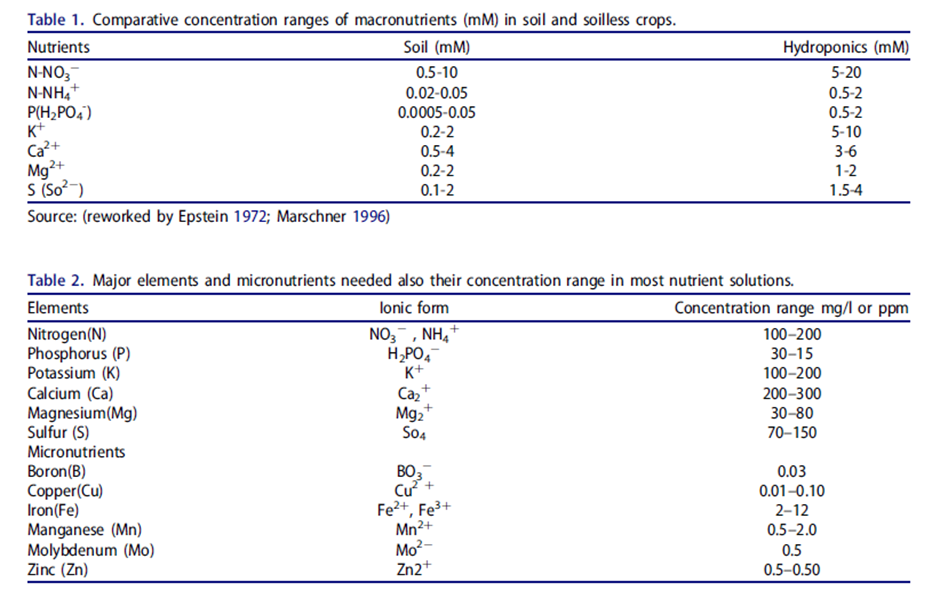
Of course, crops in a vertical farm also need light in order to grow. Because the system is placed indoors, this lighting will largely come from artificial sources. Hence, there will be substantial energy to operate a vertical farm. LED is used the most, but induction lighting is also an option, (Al-Kodmany, 2018). It is found that most greenhouse crops grow optimally with a light intensity between 50000 and 70000 lux, (Khan, Purohit and Vadsaria, 2021). But there has to be a right tradeoff between energy costs and crop yield. Since low light intensities are used more efficiently, it can be beneficial to use constant low light intensity instead of a more natural rhythm, (Khan, Purohit and Vadsaria, 2021).
Maximum fruit production is generally achieved with a day temperature of 20°C and night temperature of 18°C. Because this almost perfectly corresponds to room temperature, there is no need to heat our vertical farm system.
Preliminary Literature Study
Mau:
1.
Article: http://27.109.7.66:8080/xmlui/handle/123456789/682
The article highlights the efforts being made to automate the labor-intensive agriculture industry through the use of robots and machines. A vision-based row guidance method is proposed for autonomous farming robots to navigate through row crops in a field, using machine vision to detect the offset and heading angle in real-time. The robot platform is designed with an open architecture and a control scheme for row guidance. The focus of the robot is to monitor the health of the plants by observing their leaf color and height, as well as the surrounding environmental conditions such as temperature, moisture, and humidity. The information collected is then used to determine the health of the plant, which is displayed on an LCD screen.
2.
Article: https://ieeexplore.ieee.org/abstract/document/9080736
This paper discusses the how wireless sensor network can be used to detect weeds. However, when a lot of static sensors are present the project becomes expensive and chaotic. Therefore the researches decided to make use of autonomous bots which are equipped with ultrasonic sensors and cameras that can detect weeds. The camera input is then processed using a neural network and image segmentation. Once weeds were detected, herbicides were sprayed on them using solenoid valves.
3.
Article: https://link.springer.com/chapter/10.1007/978-90-481-9277-9_20#Abs1
The text discusses the demand for advances in automation in agriculture, horticulture, and forestry due to high labor costs. The focus is on the potential of robotic outdoor systems to increase efficiency and make operations economically viable. The chapter provides examples of autonomous crop protection operations that are likely to be commercially available in the near future. These operations, such as scouting and monitoring, can be automated for increased efficiency, but current systems still have drawbacks, including a lack of robust and safe behaviors. The use of high-precision targeting based on individual weed plant detections holds the potential to greatly reduce the use of resources, such as herbicides.
4.
Article:An overview of smart irrigation systems using IoT - ScienceDirect
The paper provides an overview of the field of agricultural robotics, which has become a popular topic of research and development in recent years. It highlights the critical challenges faced by the agriculture industry, such as labor shortages and the need for environmentally friendly practices, and how agricultural robotics can address these issues. The paper also presents an overview of the current state-of-the-art in agricultural robotics, including individual robots for specific tasks and cooperative teams of robots for farming tasks. The paper concludes by discussing the challenges that still need to be addressed in order to fully automate agricultural production, which is seen as a promising solution for sustaining the growing human population
5.
Article: https://www.mdpi.com/2073-4395/11/9/1818
This paper discusses how agricultural sustainability can be enhanced by integrating technology. Improving of irrigation systems is of importance and IoT and sensory systems could habilitate this. Automated irrigation systems are important for conserving water. IoT and automation are linked to agriculture and farming techniques for making processes more effective and efficient. Moreover, sensory systems improve farmers' understanding of crops and reduce environmental impact and conserve resources.
Vietlinh:
1.
The paper reviews recent advancements in the application of automation and robotics in precision agriculture. The aim of precision agriculture is to maximize agriculture produce while minimizing environmental impact through precise farm management using modern technology. The paper highlights challenges and provides suggestions for the design of efficient autonomous agricultural robotic systems that consider all possibilities and challenges in different types of agriculture operations and take into account development cost to make it affordable for farmers.
2.
Article: https://ieeexplore.ieee.org/document/9243253
This paper reviews three important developments in the field of autonomous robotics in agriculture. These developments include navigation using GPS technology and vision-based navigation, harvesting systems with sensors and actuators, and a soil analysis system to provide farmers with information about the land. The paper presents successful research and applications in these areas and highlights the needs for additional research and development to bring this technology to developing countries where it is not widely used in agriculture.
3.
Article: https://www.sciencedirect.com/science/article/pii/S1110982321000582
This paper focuses on new approaches in smart farming and highlights the importance of data gathering, transmission, storage, and analysis in solving the challenges of food shortage and population growth. IoT is crucial in smart systems, and the smart irrigation systems uses sensors for monitoring water level, irrigation efficiency, and climate. The use of unmanned aerial vehicles (UAVs) and robots in agriculture is also discussed, and their applications include harvesting, seeding, weed detection, irrigation, and pest control. The paper also mentions the role of artificial intelligence (AI), deep learning (DL), machine learning (ML), and wireless communications in smart farming. The paper highlights the challenges in implementing smart farming in developing countries and the need for government and private sector support, as well as the use of Smart Decision Support Systems (SDSS) for real-time analysis and soil mapping to support proper decision making.
4.
Article: https://ieeexplore.ieee.org/abstract/document/9003290
This paper examines the impact of IoT and smart computing technologies on agriculture and farming. It highlights how these technologies have revolutionized the industry and are now widely used for tasks such as monitoring crops and soil moisture. However, the paper also warns of the cybersecurity threats and vulnerabilities that come with using IoT and smart communication technologies in the smart farming environment. The paper provides a holistic study of the security and privacy issues in a smart farming ecosystem, outlining a multi-layered architecture and discussing potential cyber-attack scenarios. The paper also identifies open research challenges and future directions in the field.
5.
Article: https://onlinelibrary.wiley.com/doi/full/10.1002/aepp.13177
The paper describes the potential benefits and regulatory challenges of using autonomous crop equipment in agriculture. The paper aims to summarize the primary regulatory issues related to the use of autonomous equipment for crop production and its impact on the development and adoption of this technology. The paper covers three main objectives:
1. Summarizing the lessons learned from regulation of autonomous equipment in other sectors of the economy
2. Describing the current status of regulation related to autonomous crop equipment
3. Providing an example from the United Kingdom of how regulation can affect the development of autonomous equipment in crop production.
The paper also argues that regulation will have a major impact on the type of autonomous crop equipment that is commercialized and the pattern of its adoption.
Aloysia:
Articles 1-5 can help justify the need for the development of vertical farming (without focusing on vertical farming itself). Articles 6-9 discuss the benefits and drawbacks of vertical farming. Articles 7-12 discusses crops / most efficient input→ output in food/farming.
1: Rundlöf, M., Edlund, M., & Smith, H. G. (2010). Organic farming at local and landscape scales benefits plant diversity. Ecography, Ecography(3), 514–522. https://doi.org/10.1111/j.1600-0587.2009.05938.x
The article examined the effects of organic farming on plant diversity at both local and landscape scales. They hypothesizes that the consequences of organic farming would differ depending on the scale of uptake in a particular landscape. The study utilizes a landscape scale approach and found that the local effect of organic farming was consistently stronger, with higher diversity in borders adjoining organic fields. The results showed that “forb richness” was higher in borders located in landscapes with higher proportion of organic land (potentially due to dispersal of mainly annual plant species from the organic fields). The study highlights the importance of considering multiple scales, including local and landscape factors, to better understand biodiversity patterns, and the potential benefits of organic farming.
2: Lobley, M., Butler, A., & Reed, M. (2009). The contribution of organic farming to rural development: An exploration of the socio-economic linkages of organic and non-organic farms in England. Land Use Policy, 26(3), 723–735. https://doi.org/10.1016/j.landusepol.2008.09.007
The article explores the socio-economic link between organic and non-organic farms, and the contribution of organic farming to rural development (in England). The study found that organic farms tend to employ more people and differ in characteristics (to non-organic farms). Differences in local economic connections between the two were miniscule. The authors argue that a more nuances approach is needed when considering the rural development benefits of organic farming, where other factors such as the type of enterprises on the farm and the marketing strategies adopted by the business should also be taken into account. The focus of debate shifted from equating organic production with local supply and assuming a local economic benefit to a broader understanding of the local “agro-food” economy and the connections between different types of farms and local and export markets.
3: Lipper, L., Thornton, P., Campbell, B. M., Baedeker, T., Braimoh, A., Bwalya, M., Caron, P., Cattaneo, A., Garrity, D., Henry, K., Hottle, R., Jackson, L., Jarvis, A., Kossam, F., Mann, W., McCarthy, N., Meybeck, A., Neufeldt, H., Remington, T., … Torquebiau, E. F. (2014). Climate-smart agriculture for food security. Nature Climate Change, 4(12), 1068–1072. https://doi.org/10.1038/nclimate2437
The paper discusses “Climate-smart agriculture” which is a strategy aimed at ensuring food security with regards to Climate change. Changes in rainfall and temperature patterns have been affecting agriculture. The livelihoods of those dependent on agriculture become more vulnerable, especially the poor. CSA aims to reduce these risks by increasing the adaptive capacity of farmers and improving resilience and resource use efficiency in agriculture. This would involve efforts from farmers, researchers, the private sector, civil society, and policy makers, with focus on; building evidence, increasing local institutional effectiveness, fostering policy coherence, and linking financing.
4: Ortiz, A. M., Outhwaite, C. L., Dalin, C., & Newbold, T. (2021). A review of the interactions between biodiversity, agriculture, climate change, and International Trade: Research and policy priorities. One Earth, 4(1), 88–101. https://doi.org/10.1016/j.oneear.2020.12.008
A section that I focused on discusses the impact of international trade on biodiversity and the environment. Nearly 1 billion people consume internationally traded food products, which leads to environmental impacts in the country of origin, mostly in developing countries. International trade drives 25% of bird species loss and more than half of the biodiversity impacts due to loss of suitable habitat from soybean production in the Brazilian Cerrado. Life cycle assessment (LCA) is emerging as a method for evaluating the end-to-end environmental impact of products and can link a final commodity to its associated biodiversity loss. However, it can be challenging to measure and aggregate impacts across a product's life cycle. The impact of international trade on biodiversity through climate change has not been considered, but countries could design trade policies that consider climate change and biodiversity to reduce damages. International trade also contributes to climate change through GHG emissions associated with traded commodities and their transport, which make up a small percentage of the total GHG emissions from food production. There is still a need for research to understand how international trade can be used to mitigate negative impacts or take advantage of benefits of climate change.
5: Lal, R. (2020). Home Gardening and urban agriculture for advancing food and nutritional security in response to the COVID-19 pandemic. Food Security, 12(4), 871–876. https://doi.org/10.1007/s12571-020-01058-3
The article states that the world cereal (?) production increased by 2.3% in 2019(?????), but the number of people facing severe food insecurity may double to 265 million by the end of 2020 due to the COVID-19 pandemic. The problem is severe in urban areas where the global population is projected to increase, causing food supply chain disruptions and increase in food waste. To address the issue, there is a need for more resilient food systems, reduced food waste, and strengthened local food production. Home gardening and urban agriculture can play an important role in advancing food and nutritional security and improving ecosystem services, but risks of soil contamination by heavy metals must be addressed.
6: Jansen, G., Cila, N., Kanis, M., & Slaats, Y. (2016). Attitudes towards vertical farming at home. Proceedings of the 2016 CHI Conference Extended Abstracts on Human Factors in Computing Systems. https://doi.org/10.1145/2851581.2892474
This paper aimed to gain insights into people's attitudes towards small scale vertical farming technology for growing food at home. A prototype was developed that incorporated sensor and LED technology and was tested in a user study. The results of the study showed that people generally had a positive attitude towards the system, although a fully autonomous system was not preferred and concerns about food safety were raised.
7: Benke, K., & Tomkins, B. (2017). Future food-production systems: Vertical Farming and controlled-environment agriculture. Sustainability: Science, Practice and Policy, 13(1), 13–26. https://doi.org/10.1080/15487733.2017.1394054
This paper discusses the current challenges policy makers face with regards to providing food for the growing world population (expected to be 9.7billion by 2050). The issue of declining fertile land per person due to increasing population, urbanization and climate change was discussed. The paper highlights urban vertical farming as a potential solution because it involves the use of technology and automation for “land-use optimization.” Vertical farming aims to both increase productivity and reduce the environmental impact, whilst providing benifits (clean food source, biosecurity, protection from pests, droughts, and reduced transportation - using less fuel/less emissions). The article discusses pros and cons of vertical farming.
8. Banerjee, C., & Adenaeuer, L. (2014). Up, up and away! the economics of Vertical Farming. Journal of Agricultural Studies, 2(1), 40. https://doi.org/10.5296/jas.v2i1.4526
This article discusses the economic feasibility of Vertical farming. This was done by designing and simulating a 37 floor farm. The results showed that the farm could yield 3,500 tons of fruits and vegetables, and 140 tons of tilapia fillets, which is 516 times more productive than a traditional 0.25ha farm. The estimated costs were estimated to be 200million euros. The farm itself would require 80million litres of water and 3.5GWh of power power year. The cost of the produced food was estimated to be about 3.50euros to 4euros per kg. The article also states that more research is needed to optimize the production process to reap the full economic, environmental, and social benefits.
9. Al-Kodmany, K. (2018). The Vertical Farm: A review of developments and implications for the Vertical City. Buildings, 8(2), 24. https://doi.org/10.3390/buildings8020024
This paper discusses the growing need for vertical farming caused by food security concerns, urban population growth, limited farmland, and “food miles” (how far the food travels from farm to plate). The paper suggests that urban agriculture is a solution to these problems. Vertical farms combines food production and consumption in one place, and is stated to be suitable and an efficient option for urban areas where land is limited (and/or expensive). Advances in greenhouse technologies such as hydroponics, aeroponics, and aquaponics have made vertical farming more promising. Like the other papers mentioned prior to this one, this paper acknowledges obstacles with implementing vertical farms such as; economic feasibility, regulations, and lack of expertise.
10. Uphof, J. C. T. (1961). Dictionary of economic plants. The Quarterly Review of Biology, 36(4), 294–294. https://doi.org/10.1086/403521
This book/paper provides a comprehensive list of information on plants containing over 6000 economic plant species. Thee plants are listed alphabetically, includes scinitifc names, and descriptions. The book also includes groups of plants such as fungi, fiber sources, food plants, medicinal plants and food plants for livestock.
11. Hunt, R. (1990). Basic growth analysis. https://doi.org/10.1007/978-94-010-9117-6
This book is an introductory guide for students on the principles and practice of plant growth analysis. It provides a quantitive approach to describing and interpreting the performance of plant systems grown under various conditions. The methods described require simple experimental data and facilities.
12. Wöhrle, R. E., & Wöhrle, H. J. (2017). Basics designing with plants. Birkhäuser.
Helps understand how to design with plants where plants have specific needs and requirements. Although is more focused on designing WITH plants, can be useful to learn how they learnt about the limitations of plants.
Paul:
Morgan, B., Stocker, M. D., Valdes-Abellan, J., Kim, M. S., & Pachepsky, Y. (2020). Drone-based imaging to assess the microbial water quality in an irrigation pond: A pilot study. Science of the Total Environment, 716, 135757. https://doi.org/10.1016/j.scitotenv.2019.135757
This article covers a way to determine the quality of the water used for irrigation on farms. By using a small Unmanned Aerial Vehicle (sUAV) with several ways of capturing images while above a body of water and a regression tree algorithm, the E. coli concentration of the water can be determined quite accurately.
Al-Rami, B. ., Alheeti, K. M. A. ., Aldosari, W. M., Alshahrani, S. M. ., & Al-Abrez, S. M. . (2022). A New Classification Method for Drone-Based Crops in Smart Farming. International Journal of Interactive Mobile Technologies (iJIM), 16(09), pp. 164–174. https://doi.org/10.3991/ijim.v16i09.30037
This paper covers a method for crop classification on farms using drone imagery. To do this it uses a Convolutional Neural Network (CNN), as well as using methods commonly found other image processing algorithms. They could reliably identify crops in a field with a variety of plants as well as diseases on plants, classified by small details like spots on leaves.
Sri, M.S., Nikita, V.M., Bhargavi, S.D., Muneeruddin, M., Pragthi, K., & Kranthi, T. (2021). APP BASED AUTOMATIC IRRIGATION SYSTEM.
The article describes a simple water management system for farms using WiFi. Using data from soil measurers underneath the ground were crops are, more water can either manually or automatically be irrigated to the specific areas, depending on the users preference. The automatic model compares the current moisture levels with standard expected values and either switches the water on or off withing acceptable ranges.
Olujimi, A., Aaron, I., Adebayo, O., Afolarin, A., Jonathan, E. (2022). Smart solar powered irrigation system. Journal Européen des Systèmes Automatisés, Vol. 55, No. 4, pp. 535-540. https://doi.org/10.18280/jesa.550413
This article considers an expanded and more sophisticated system for automatic irrigation compared to the previous article. Using a solar powered system which besides moisture levels also considers weather forecasts and soil temperatures, It can optimize water usage for crops on a farm, while not requiring any energy other than that generated by its solar panels. This means it is a valuable tool on farms without easy access to energy.
Mauri, P. V., Yousfi, S., Parra, L., Lloret, J., & Marin, J. M. (2022). The Usefulness of Drone Imagery and Remote Sensing Methods for Monitoring Turfgrass Irrigation. Advances in Intelligent Systems and Computing, 913–923. https://doi.org/10.1007/978-3-030-90633-7_78
This paper discusses various methods for drones to aid in monitoring crop health. Using IR sensors to acquire soil temperatures, RGB cameras for crop identification, and moisture sensors on the ground whose data can be logged by the drone, it was found that these low cost drones were very efficient and accurate in their readings. It is especially useful for grassland management, were large areas need to be monitored daily.
Lars:
1 C.W. Bac, E.J. van Henten, J. Hemminga , Y. Edan (2014); Harvesting robots for high-value crops: state-of-the-art review and challenges ahead, https://edepot.wur.nl/327202#page=19.
This article investigates the use of robots in the harvesting of crops. It has two main objectives: reviewing the state-of-the-art technology in automatic harvesting and formulating challenges for future research in the field. The performance of the harvesting robots are determined by various factors such as localization, speed, successful harvesting and probability of damage. It was found that the fruits were harvested successfully 66% of the time. The main challenge is dealing with the dynamic environment of a crop farm. Future research should be focused on this aspect.
2 Henten, Hemming, Tuijl, Kornet, Meuleman, Bontsema, van Os (2002); An Autonomous Robot for Harvesting Cucumbers in Greenhouses, https://link.springer.com/article/10.1023/A:1020568125418.
This article is about an automatic cucumber harvesting robot. The goal is to design a robot that is both fast and accurate. In order to achieve this goal the environment in which the robot operates is specified, greenhouses. The next step is to formulate concrete design specifications. For example, how the griper should like and vision system of the robot. Using these design requirement a prototype was built. It had an accuracy of 80% and needed 45s on average to harvest a cucumber.
3 Henten, Bontsema (2009); Time-scale decomposition of an optimal control problem in greenhouse climate management, https://www.sciencedirect.com/science/article/abs/pii/S0967066108001019.
A model to regulate the climate in greenhouses is proposed in this article. It should maximize the effectiveness of greenhouses. To do this, the optimal trade-off between food production and energy consumption needs to be found. A hierarchical system is used in the model. This means that the components of the systems are linked to each other in a hierarchical manner from top to bottom. The proposed model should be able to deal with fast changing weather conditions and the slow food growing process simultaneously.
4 V. Dharmaraj* and C. Vijayanand (2018); Artificial Intelligence (AI) in Agriculture.
This paper analyses the role of AI in farming. It sees AI technologies as a way to improve food production and ensure that the growing world population can be fed. There are various technologies that are useful in an agricultural context such as disease detection, checking the ripeness of crops, field management and automatic irrigation. This should make farming both more profitable and sustainable in foreseeable future.
5 Selvaraj, Vergara, Ruiz, Safari, Elayabalan, Ocimati, Blomme (2019); AI-powered banana diseases and pest detection, file:///C:/Users/20213415/Downloads/s13007-019-0475-z.pdf.
An AI models for detecting diseases in banana crops are designed and tested. The AI use (dcnn) deep convolutional neural networks and are trained with transfer learning. Transfer learning is a method to train AI in which the program is shown many pictures of a certain phenomenon, in this case crop diseases. Afterwards it should be able to detect new pictures of the same theme. The best AI were able to detect diseases in banana crop more than 90% of the time.
Wilbur
1. Wan-Soo Kim, Dae-Hyun Lee, Yong-Joo Kim, Taehyeong Kim, Rok-Yeun Hwang, Hyo-Jai Lee, Path detection for autonomous traveling in orchards using patch-based CNN, https://www.sciencedirect.com/science/article/pii/S0168169920301460?casa_token=BwbBLKZ8TM0AAAAA:1jAKheg64XZ_z5pxpEC1h2AtTO9SAmJpv9Dcfrr8zTqB8gMNM7kfBAcgTmA6CGWYgGUrRXUylg
This paper proposes a novel and efficient patch-based approach for autonomous path detection in semi-structured environments such as orchards. The focus was on a perspective path-detection approach that uses CNN-based image-patch classification. The proposed path-detection approach can segment the path area by partial area classification, and can be implemented with a shallow CNN model trained with small datasets, in contrast to segmentation learning with pixel-based classification.
2. H.Pota, R.Eaton, J.Katupitiya, S.D.Pathirana (11 August 2007), Agricultural Robotics: A Streamlined Approach to Realization of Autonomous Farming, https://ieeexplore.ieee.org/abstract/document/4579153?casa_token=LPLd5q2w97UAAAAA:T-hI_iSqFUk1YijQi6EJMqti9HKGgMGrIfU9pEAde-2FmZNQeTScUBp6k6Mig_EautjvUutp
This paper discusses an approach that will lead to the development of future Precision Autonomous Farming Systems. A farming system has a number of sub-systems that operate at a lower level. Most of the time only minor changes take place to the boundaries of the farm although major restructuring can still take place within the allocated land. Thus, the emphasis is on the restructuring of the existing farms so that they become amenable to autonomous farming.
This paper presents the requirements of a future autonomous farming system. It emphasized the need to introduce a strict structure and the importance of taking into considerations the farm system parameters in developing an a priori PFDS that is continuously used by each precision autonomous farming unit. The PFDS is primarily used for machinery navigation and seeding.
3. K. D. Sowjanya, R. Sindhu, M. Parijatham, K. Srikanth and P. Bhargav, "Multipurpose autonomous agricultural robot," 2017 International conference of Electronics, Communication and Aerospace Technology (ICECA), Coimbatore, India, 2017, pp. 696-699, doi: 10.1109/ICECA.2017.8212756.
All kinds of agricultural robots have been researched and developed to implement a number of agricultural products in many countries. This Agribot can performs basic elementary functions like harvesting, planting and spray the pesticides. The application of agricultural machinery in precision agriculture has experienced an increase in investment and research due to the use of robotics applications in the machinery design and task executions. Multipurpose autonomous agricultural robot has successfully implemented and tested for various functions like ploughing, seeding, leveling and water spraying. The advantages of multipurpose agricultural robots are reducing human intervention, ensuring proper irrigation and efficient utilization of resources. The proposed system is mainly used for crop establishment, plant care and selective harvesting.
4.R. Rahmadian and M. Widyartono, "Autonomous Robotic in Agriculture: A Review," 2020 Third International Conference on Vocational Education and Electrical Engineering (ICVEE), Surabaya, Indonesia, 2020, pp. 1-6, doi: 10.1109/ICVEE50212.2020.9243253.
This paper review three important developments that guide researchers for the future development of autonomous robotic in agriculture. The first important development is navigation, which includes the uses of GPS technology and vision-based navigation to guide the robot through the agricultural fields. The second is the development of harvesting systems on the robot that describes sensors uses for harvesting, and actuators to control harvesting devices. The third development is a soil analysis system that gives farmer information about the condition of the land.
5. Michele Butturini, Leo F.M. Marcelis, "Plant Factory: An Indoor Vertical Farming System for Efficient Quality Food Production, Second Edition," (2020), Chapter 4
In this chapter, an overview is given of the different types of vertical farms found in Europe, i.e., PFALs (plant factory with artificial light), container farms, in-store farms, and appliance farms. The entrepreneurial landscape is described. This description not only includes companies growing the crops but also companies supplying the technology. Many of the European vertical farming companies are listed, including well-established and start-up companies. The potential, and risks, of vertical farming are discussed in the European context.
Sources
- Albert, S. (2022, April 29). Vegetable harvest times. Harvest to Table. Retrieved March 10, 2023, from https://harvesttotable.com/vegetable_harvest_times/
- Al-Kodmany, K. (2018). The vertical farm: A review of developments and implications for the vertical city. Buildings, 8(2), 24.
- Allred , J., & Mattson, N. (2021, February 11). Growing better greenhouse microgreens. Greenhouse Product News. Retrieved March 9, 2023, from https://gpnmag.com/article/growing-better-greenhouse-microgreens/
- Bantis, F. (2021). Light spectrum differentially affects the yield and phytochemical content of microgreen vegetables in a plant factory. Plants, 10(10), 2182. https://doi.org/10.3390/plants10102182
- Cope, K. R., & Bugbee, B. (2013). Spectral effects of three types of white light-emitting diodes on plant growth and development: Absolute versus relative amounts of blue light. HortScience, 48(4), 504–509. https://doi.org/10.21273/hortsci.48.4.504
- CO2 Calculator for Grow Room or indoor greenhouse. CO2 Meter. (2015, October 1). Retrieved March 12, 2023, from https://www.co2meter.com/blogs/news/41003521-co2-calculator-for-grow-room-or-indoor-greenhouse
- Di Gioia, F., Renna, M., & Santamaria, P. (2017). Sprouts, microgreens and “Baby leaf” vegetables. Food Engineering Series, 403–432. https://doi.org/10.1007/978-1-4939-7018-6_11
- D'Souza, C., Yuk, H.-G., Khoo, G. H., & Zhou, W. (2015). Application of light-emitting diodes in food production, postharvest preservation, and Microbiological Food Safety. Comprehensive Reviews in Food Science and Food Safety, 14(6), 719–740. https://doi.org/10.1111/1541-4337.12155
- Eldridge, B. M., Manzoni, L. R., Graham, C. A., Rodgers, B., Farmer, J. R., & Dodd, A. N. (2020). Getting to the roots of aeroponic indoor farming. New Phytologist, 228(4), 1183-1192.
- Eissa, N., Zayed, M., Hassanein, M., & Abdallah, M. (2019). Green pea sprout response to microbial inoculation and increasing atmospheric CO2 concentration. Arab Universities Journal of Agricultural Sciences, 26(6), 2513–2523. https://doi.org/10.21608/ajs.2018.35619
- Farah, J. B. (2013, September). interactive indoor farming system for urban use. MIT Libraries. Retrieved March 15, 2023, from http://hdl.handle.net/1721.1/93019
- F., F. (2014, February 4). Carbon dioxide (CO2) applications in indoor growing. CANNA CANADA. Retrieved March 12, 2023, from https://www.canna.ca/articles/carbon-dioxide-co2-applications-indoor-growing
- Ferrarezi, R. S., Weaver, G. M., van Iersel, M. W., & Testezlaf, R. (2015). Subirrigation: Historical overview, challenges, and future prospects. HortTechnology, 25(3), 262–276. https://doi.org/10.21273/horttech.25.3.262
- Gashgari, R., Alharbi, K., Mughrbil, K., Jan, A., & Glolam, A. (2018). Comparison between growing plants in hydroponic system and soil based system. World Congress on Mechanical, Chemical, and Material Engineering. https://doi.org/10.11159/icmie18.131
- Goddek, S., Joyce, A., Kotzen, B., & Burnell, G. M. (2020). Correction to: Aquaponics Food Production Systems. Aquaponics Food Production Systems. https://doi.org/10.1007/978-3-030-15943-6_25
- Jagdish . (2020, May 7). Radish seed germination, time, temperature, procedure. Gardening Tips. Retrieved March 11, 2023, from https://gardeningtips.in/radish-seed-germination-time-temperature-procedure
- Jansen, G., Cila, N., Kanis, M., & Slaats, Y. (2016). Attitudes towards vertical farming at home. Proceedings of the 2016 CHI Conference Extended Abstracts on Human Factors in Computing Systems. https://doi.org/10.1145/2851581.2892474
- Lakhiar, I. A., Gao, J., Syed, T. N., Chandio, F. A., & Buttar, N. A. (2018). Modern plant cultivation technologies in agriculture under controlled environment: A review on Aeroponics. Journal of Plant Interactions, 13(1), 338–352. https://doi.org/10.1080/17429145.2018.1472308
- Lin, K.-H., Huang, M.-Y., Huang, W.-D., Hsu, M.-H., Yang, Z.-W., & Yang, C.-M. (2013). The effects of red, blue, and white light-emitting diodes on the growth, development, and edible quality of hydroponically grown lettuce (Lactuca sativa L. var. capitata). Scientia Horticulturae, 150, 86–91. https://doi.org/10.1016/j.scienta.2012.10.002
- Khan, S., Purohit, A., & Vadsaria, N. (2020). Hydroponics: current and future state of the art in farming. Journal of Plant Nutrition, 44(10), 1515-1538.
- Mohammed, S. B., & Sookoo, R. (2016). Nutrient film technique for commercial production. Agricultural Science Research Journal, 6(11), 269-274.
- McGinnis, E., & Garden-Robinson, J. (2022, March 11). From garden to table: Leafy Greens! NDSU Agriculture and Extension. Retrieved March 10, 2023, from https://www.ndsu.edu/agriculture/extension/publications/garden-table-leafy-greens
- Mlinarić, S., Piškor, A., Melnjak, A., Mikuška, A., Šrajer Gajdošik, M., & Begović, L. (2023). Antioxidant capacity and shelf life of radish microgreens affected by growth light and cultivars. Horticulturae, 9(1), 76. https://doi.org/10.3390/horticulturae9010076
- Morton, D., & Stretch, C. (2018, May). Commercial microgreens: Production and best practices - alberta. Alberta. Retrieved March 11, 2023, from https://www1.agric.gov.ab.ca/$department/deptdocs.nsf/all/agdex15965/$file/268_18-1.pdf?OpenElement
- Palmitessa, O. D., Renna, M., Crupi, P., Lovece, A., Corbo, F., & Santamaria, P. (2020). Yield and quality characteristics of brassica microgreens as affected by the NH4:NO3 molar ratio and strength of the nutrient solution. Foods, 9(5), 677. https://doi.org/10.3390/foods9050677
- Renna, M., Stellacci, A. M., Corbo, F., & Santamaria, P. (2020). The use of a nutrient quality score is effective to assess the overall nutritional value of three brassica microgreens. Foods, 9(9), 1226. https://doi.org/10.3390/foods9091226
- Rusu, T., Cowden, R. J., Moraru, P. I., Maxim, M. A., & Ghaley, B. B. (2021). Overview of multiple applications of basil species and cultivars and the effects of production environmental parameters on yields and secondary metabolites in hydroponic systems. Sustainability, 13(20), 11332. https://doi.org/10.3390/su132011332
- Stebbins, R. A. (1982). Serious leisure: A conceptual statement. The Pacific Sociological Review, 25(2), 251–272. https://doi.org/10.2307/1388726
- S. (2021, June 26). Best Lights For Growing Microgreens – Everything You Need To Know - React Green. React Green. https://reactgreens.com/best-lights-for-growing-microgreens/
- Thomas, B. M. (1993). Overview of the speedling, Incorporated, Transplant Industry Operation. HortTechnology, 3(4), 406–408. https://doi.org/10.21273/horttech.3.4.406b
- Verdoliva, S. G., Gwyn-Jones, D., Detheridge, A., & Robson, P. (2021). Controlled comparisons between soil and hydroponic systems reveal increased water use efficiency and higher lycopene and β-carotene contents in hydroponically grown tomatoes. Scientia Horticulturae, 279, 109896. https://doi.org/10.1016/j.scienta.2021.109896
- Weber, C. F. (2017). Broccoli microgreens: A mineral-rich crop that can diversify food systems. Frontiers in Nutrition, 4. https://doi.org/10.3389/fnut.2017.00007
- Xiao, Z., Lester, G. E., Luo, Y., & Wang, Q. (2012). Assessment of vitamin and carotenoid concentrations of emerging food products: Edible microgreens. Journal of Agricultural and Food Chemistry, 60(31), 7644–7651. https://doi.org/10.1021/jf300459b
- Yeh, N., & Chung, J.-P. (2009). High-brightness leds—energy efficient lighting sources and their potential in indoor plant cultivation. Renewable and Sustainable Energy Reviews, 13(8), 2175–2180. https://doi.org/10.1016/j.rser.2009.01.027
- Zhang, X., Bian, Z., Yuan, X., Chen, X., & Lu, C. (2020). A review on the effects of light-emitting diode (LED) light on the nutrients of sprouts and microgreens. Trends in Food Science & Technology, 99, 203–216. https://doi.org/10.1016/j.tifs.2020.02.031
Appendix survey question
OVERALL QUESTIONS
- What is your attitude towards farming and gardening?
- Are you interested in vertical farming?
- How much do you know about the subject of vertical farming?
- What do you think of the technology of vertical farming?
- What do you think are the biggest benefits and shortcomings of vertical farming compared to conventional hobby farming?
- How do they think vertical farming compares to traditional gardening or farming in terms of cost, efficiency, yield and environmental impact?
- Are they concerned about the potential drawbacks such as energy consumption or lack of variety of crops?
- Does vertical farming feel natural to you and would you trust the quality of food coming from a vertical farm?
- How important is growing your own produce for you?
- How interested are you in sustainable or eco-friendly practices?
TYPE OF VERTICAL FARM
- Which overal attributes would you prefer for a vertical farm (multiple can be chosen):
- Would you prefer normal soil farming, hydroponics, aeroponics, something else?
- Would you prefer a farm focused on microgreens, regular crop vegetables, herbs, something else?
- Should the farms be singular or modular?
- Do you have any wishes regarding aestethics of the farm (color, shape, decorations).
FEATURES
- Indicate of these potential features whether you would want them to be automated or more interactive. Optionally, indicate which features you feel are absolutely necessary to include in the system (automated or not) and give a reasoning for you answers. Not all cells need to be filled in.
| Feature | Interactive (I)/ Automated (A) | Must have (M)/ Dont need (D) | Explanation/ Reasoning |
| Water and nutrient supply | |||
| Planting/seeding | |||
| Harvesting | |||
| Light control | |||
| Humidity control | |||
| Temperature control | |||
| Daily watering | |||
| Crop health monitoring | |||
| App to keep track of it all |
INVESTMENT
- How much would you be willing to pay for a system with your earlier given features/preferences?
- How much time would you want to invest in this system (say per week)?
- Would you want only one or multiple vertical farms?
- How much space would you want to allocate for this/these farm(s)?
